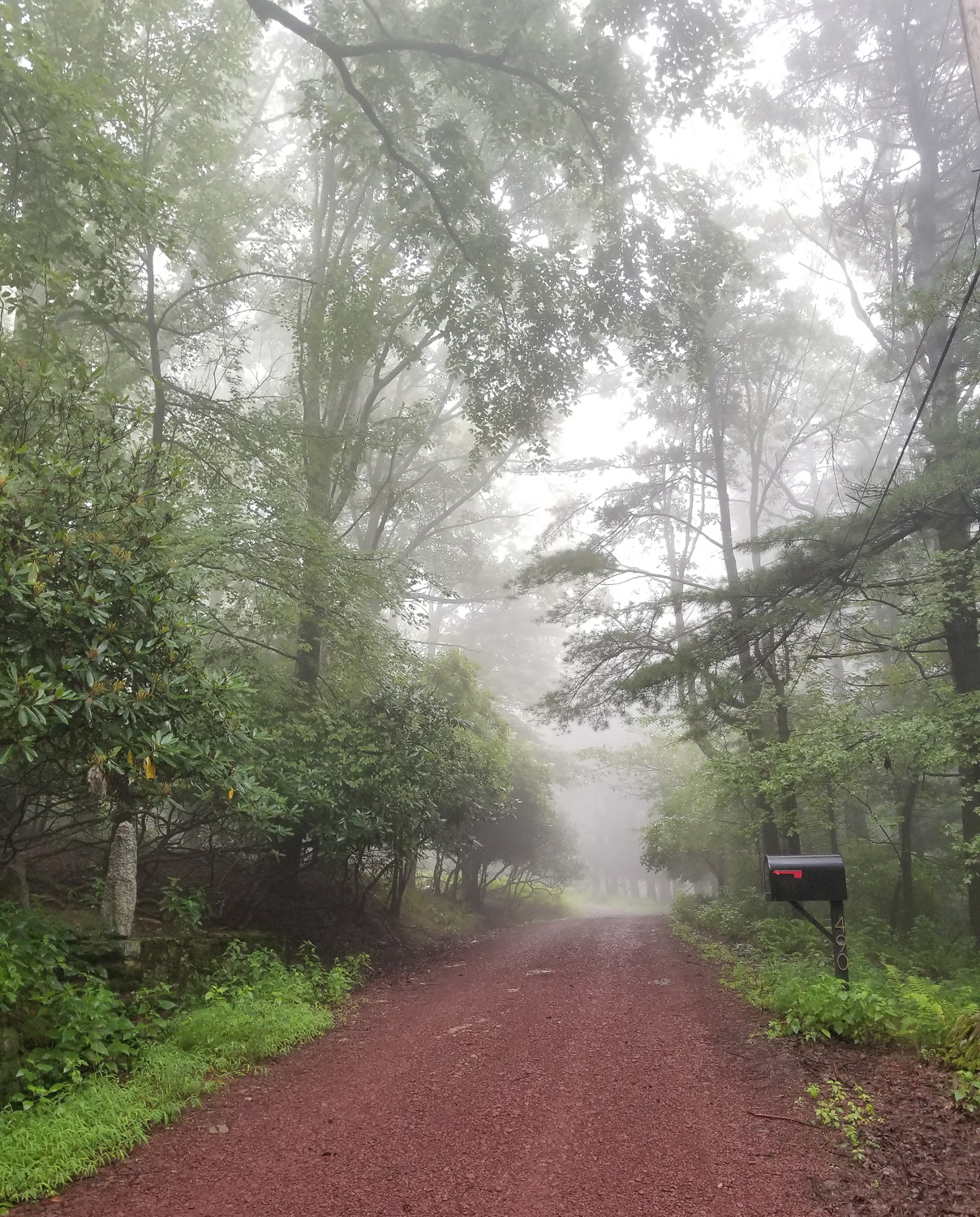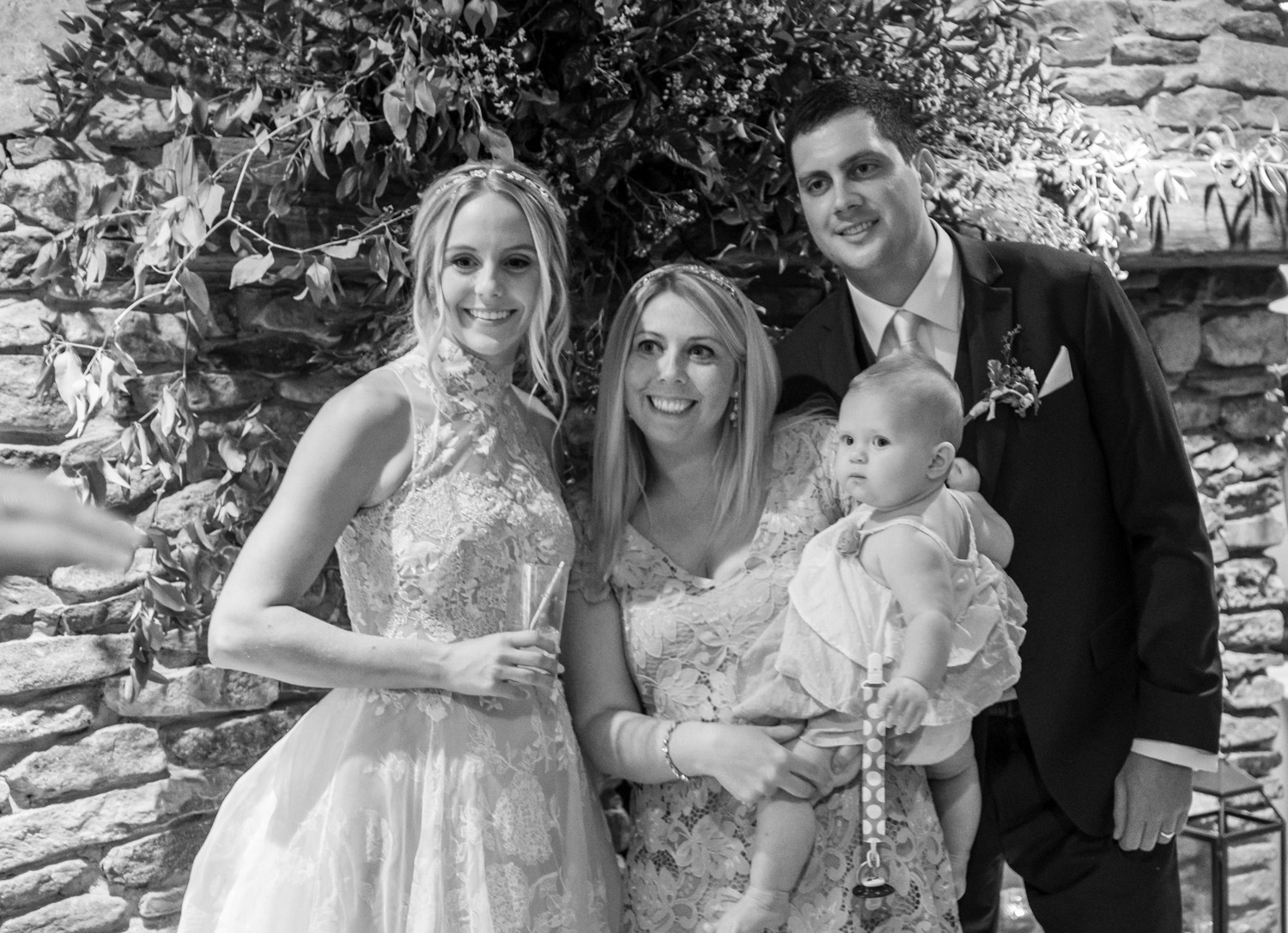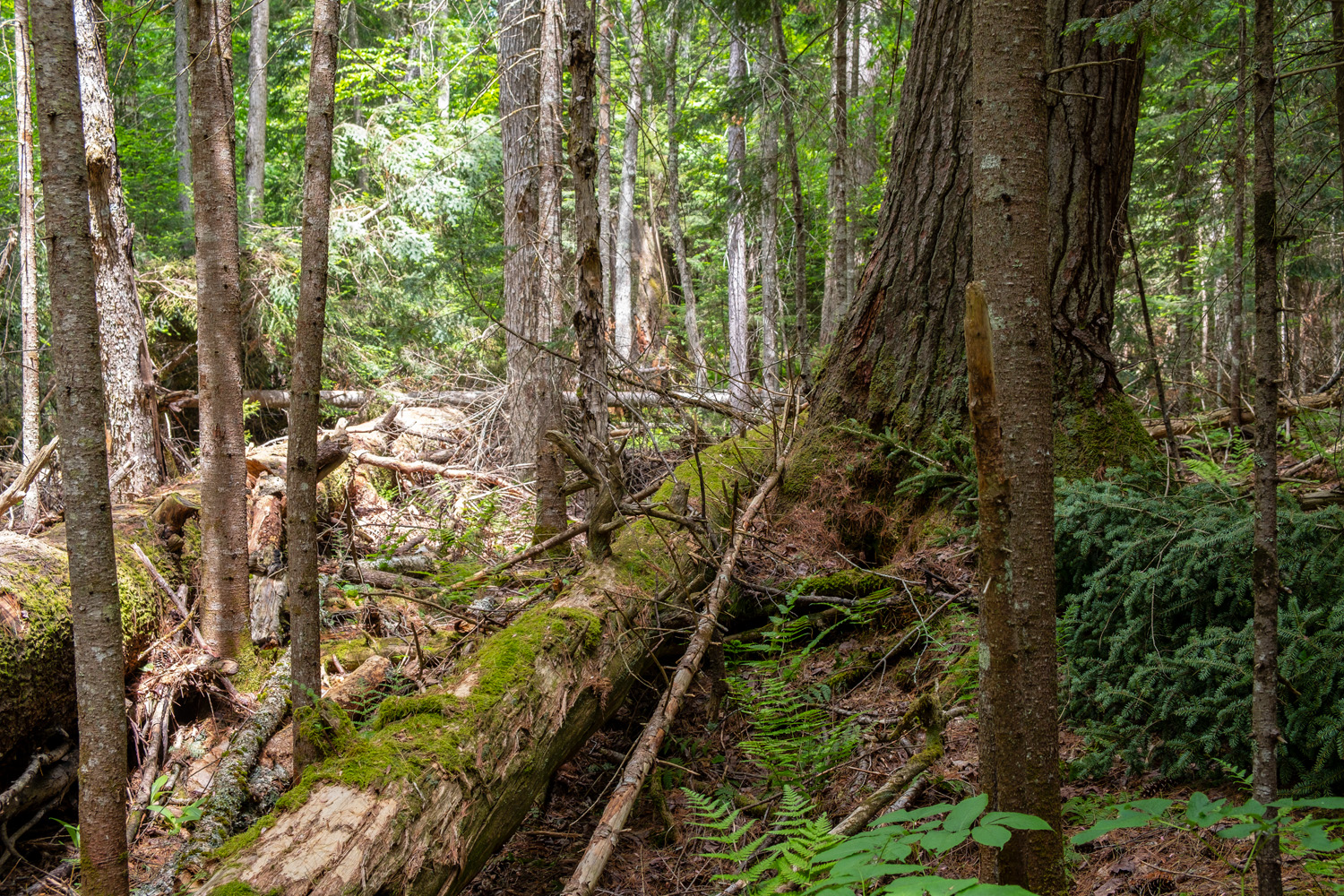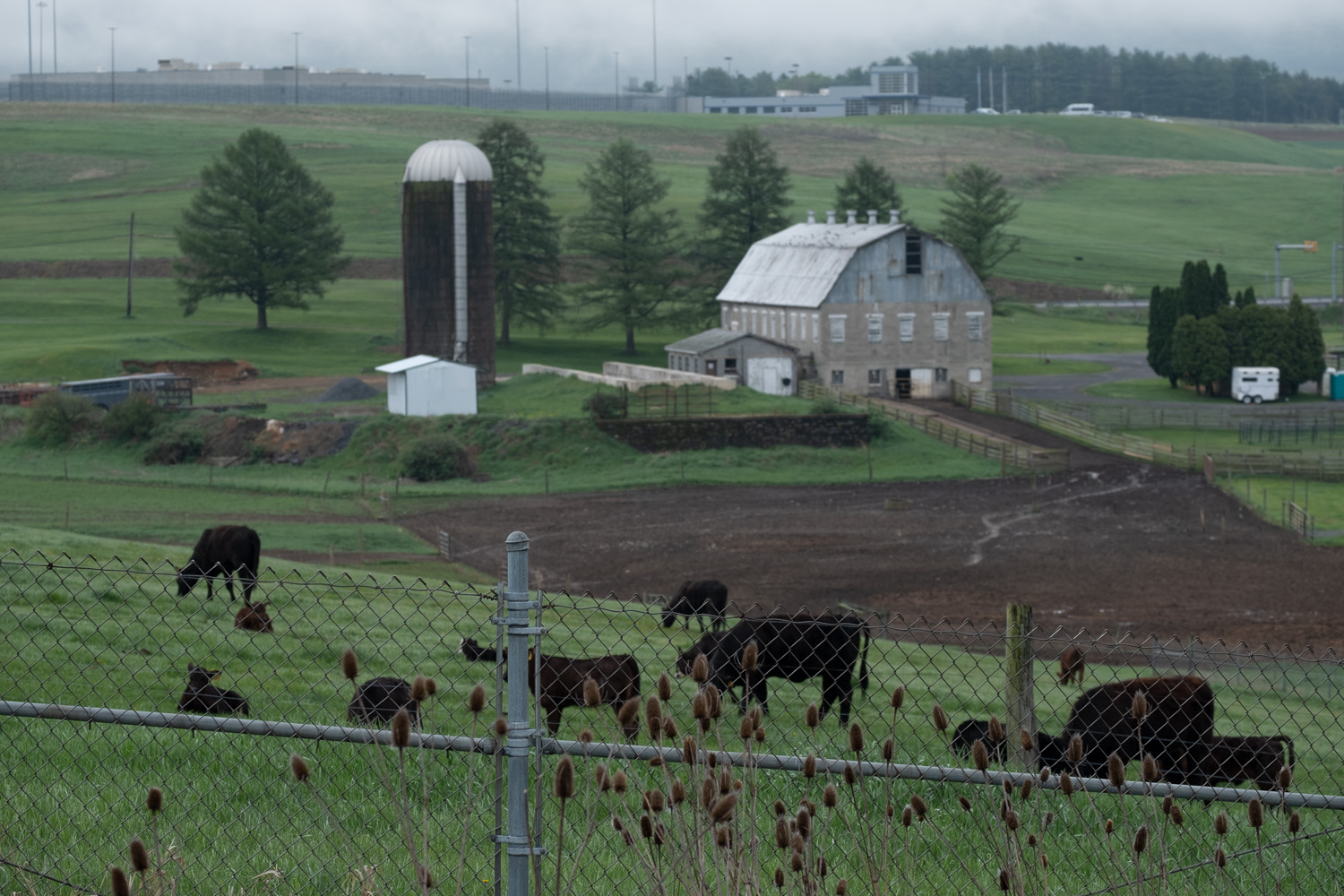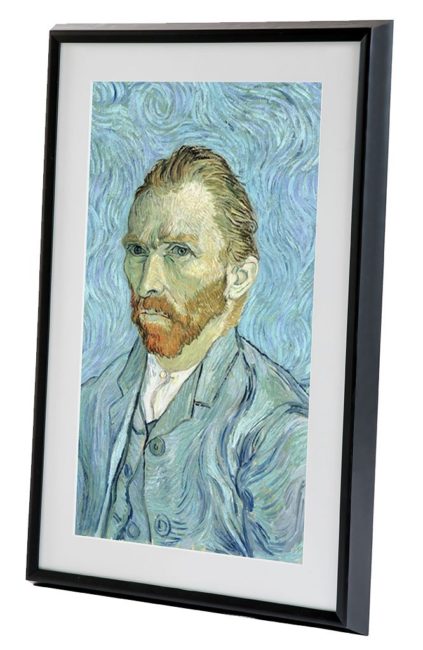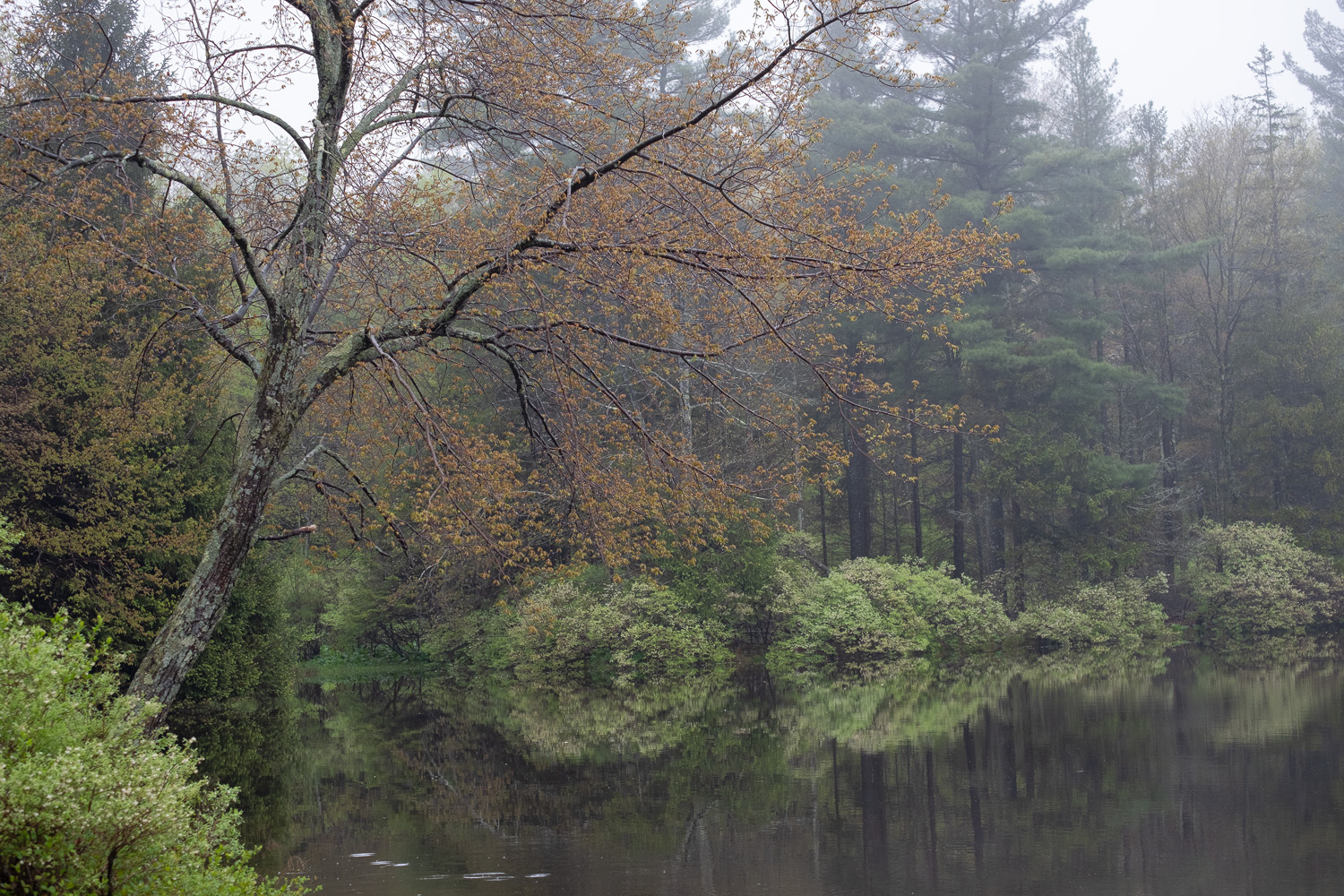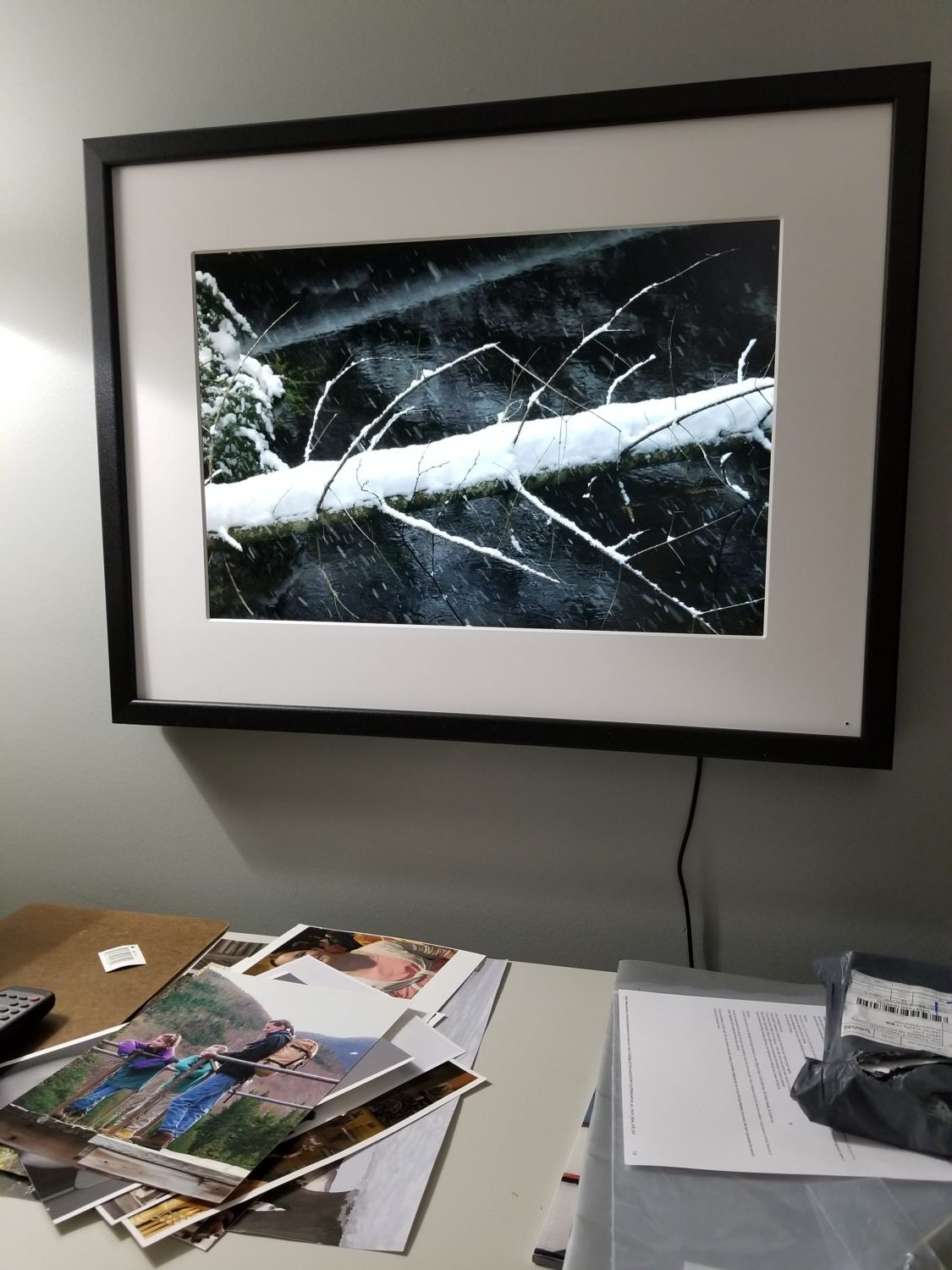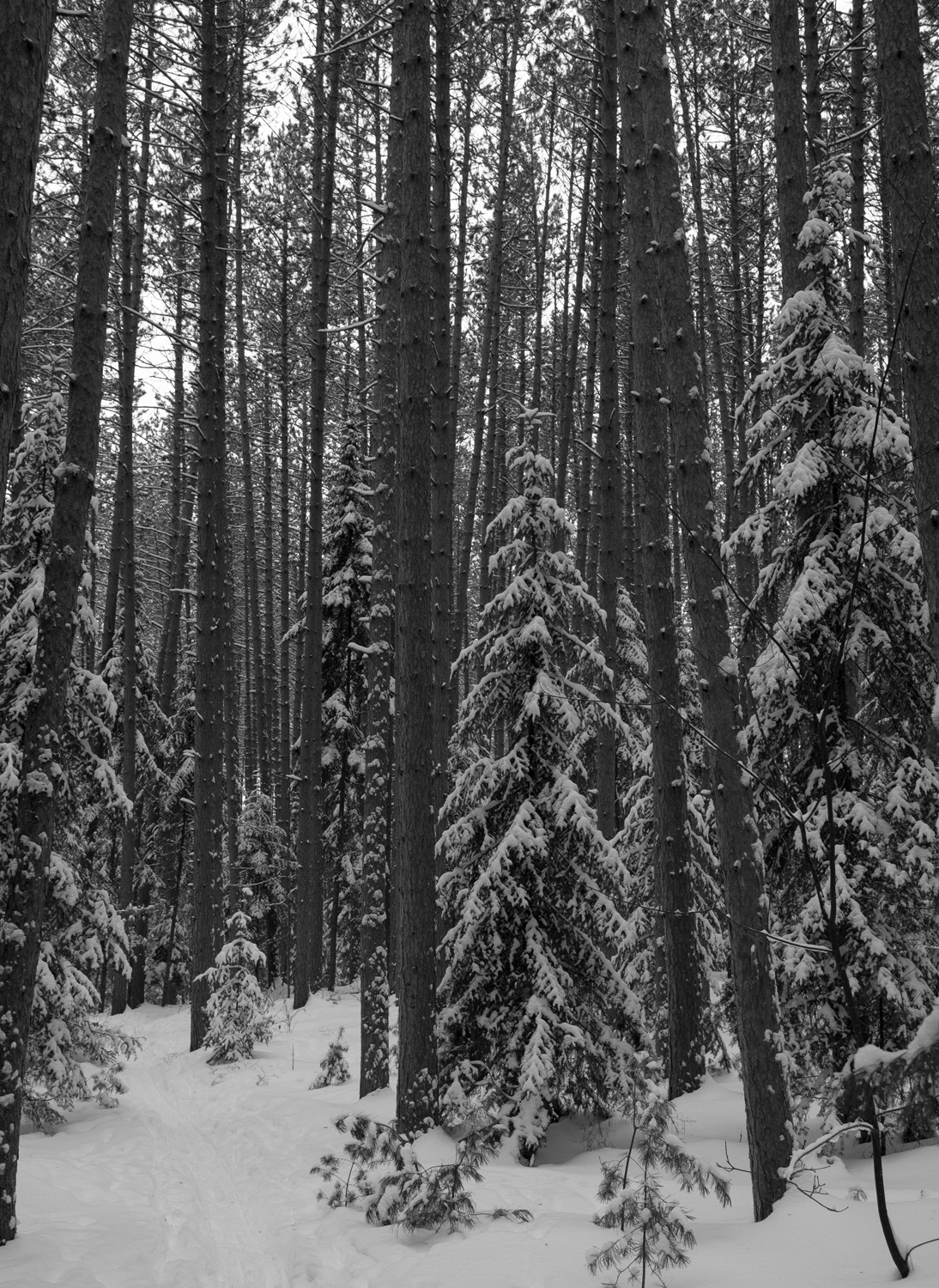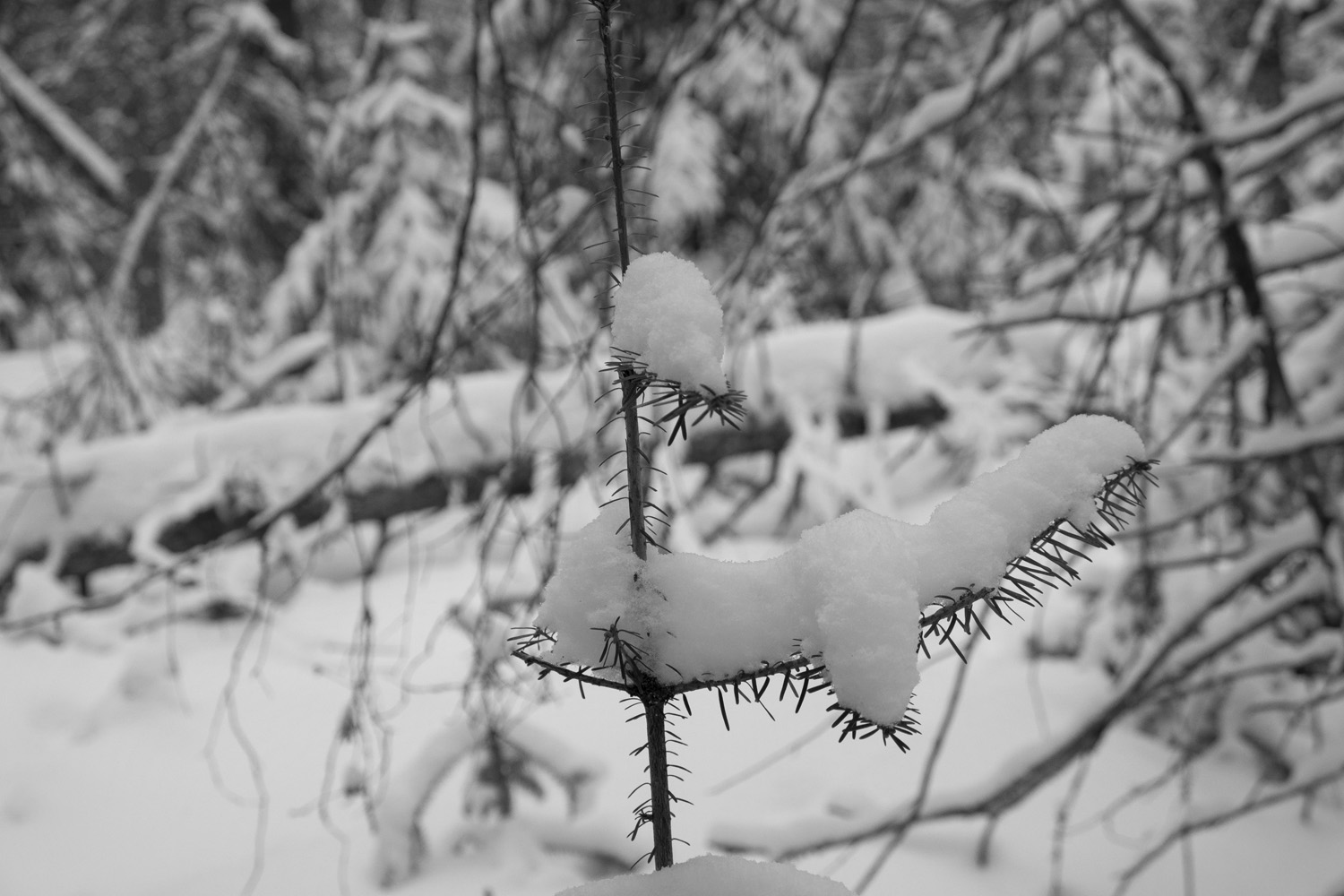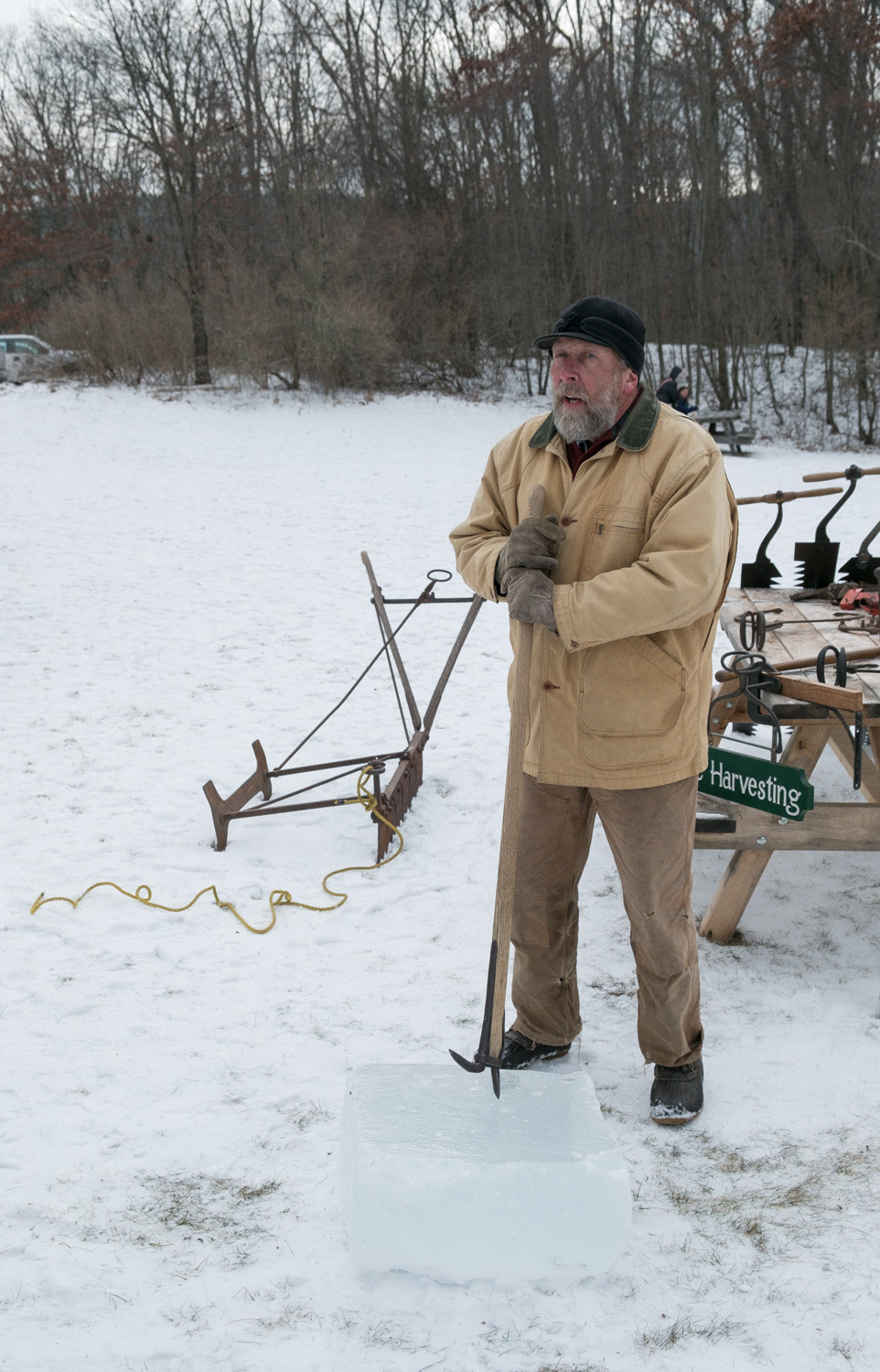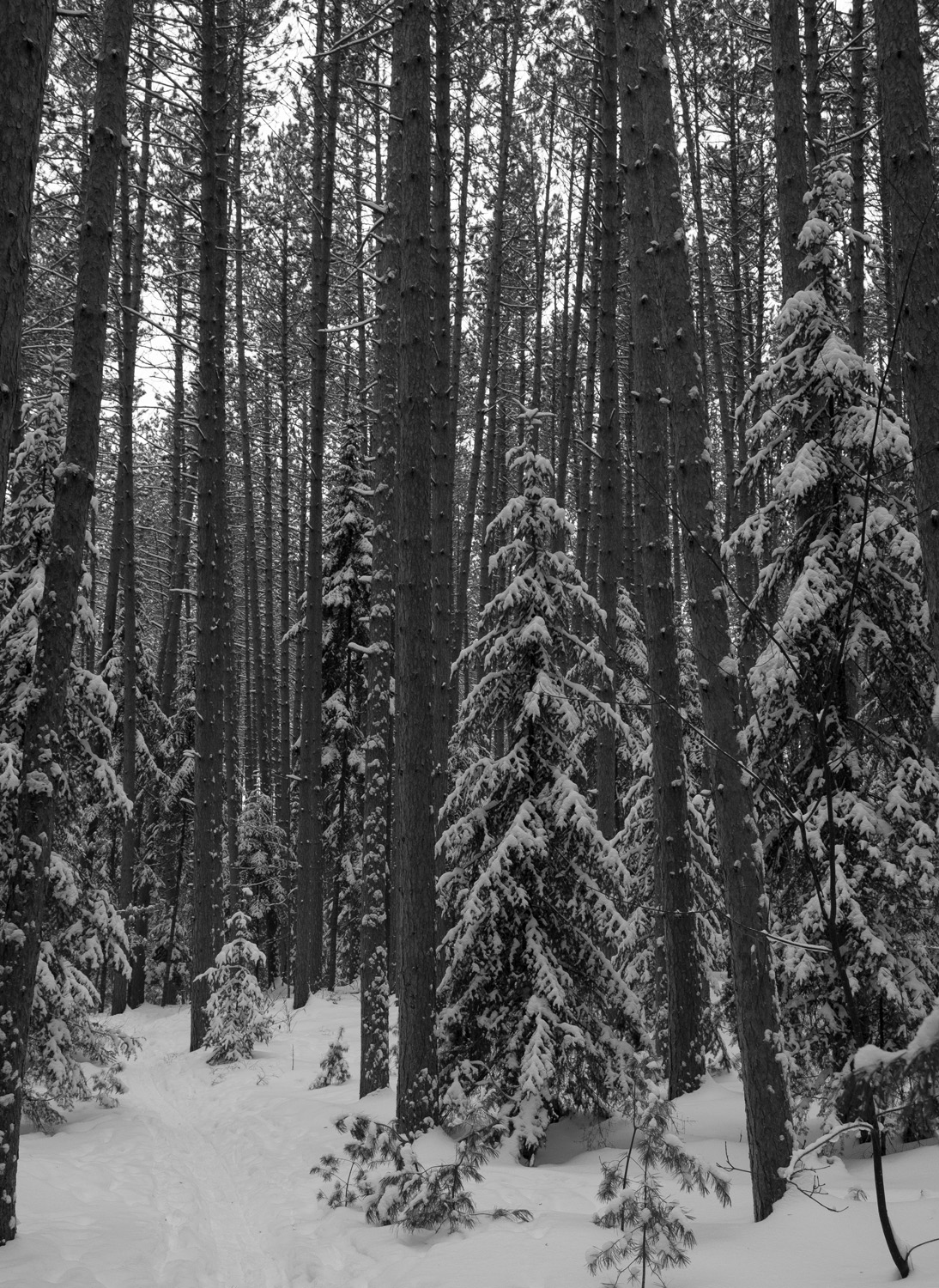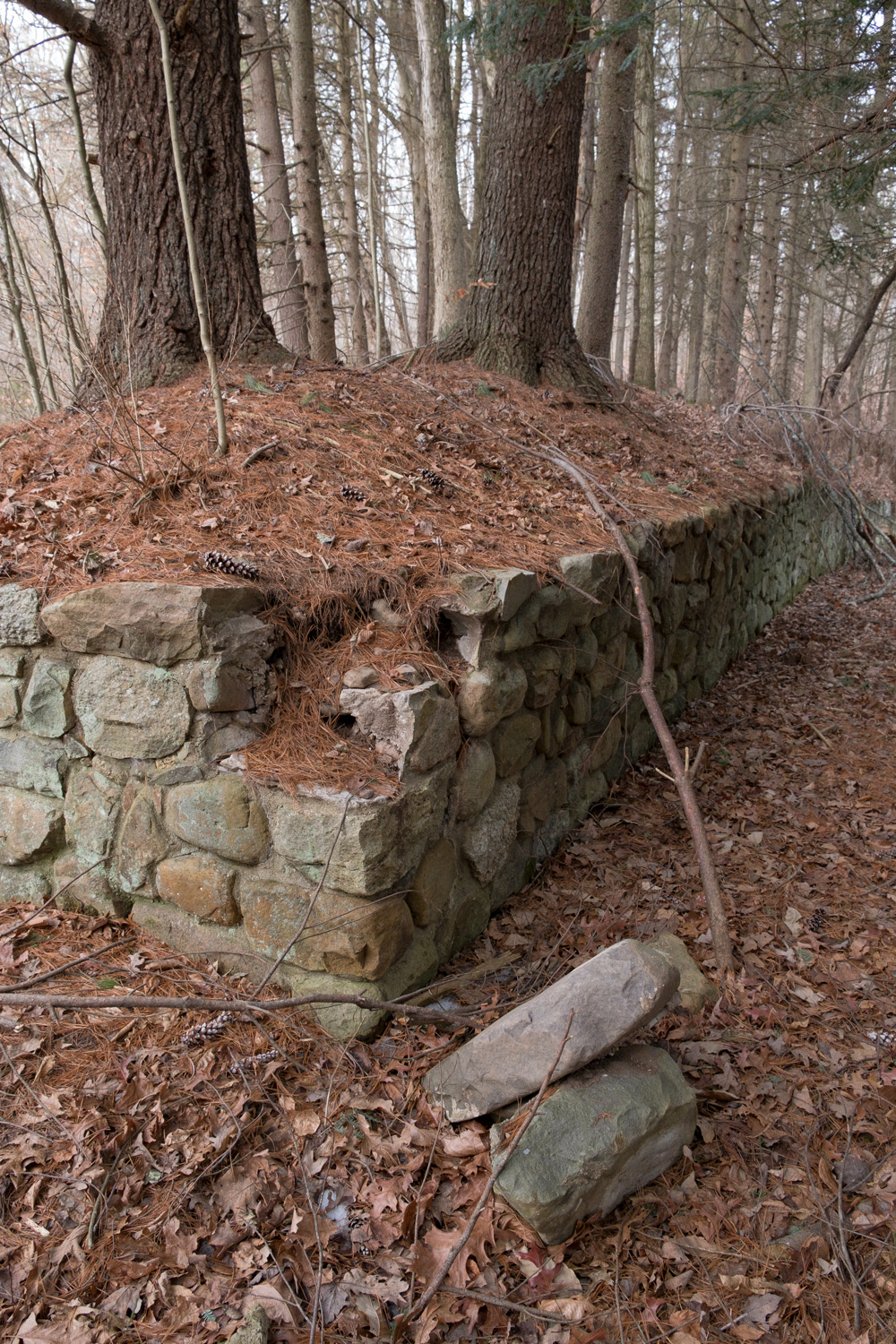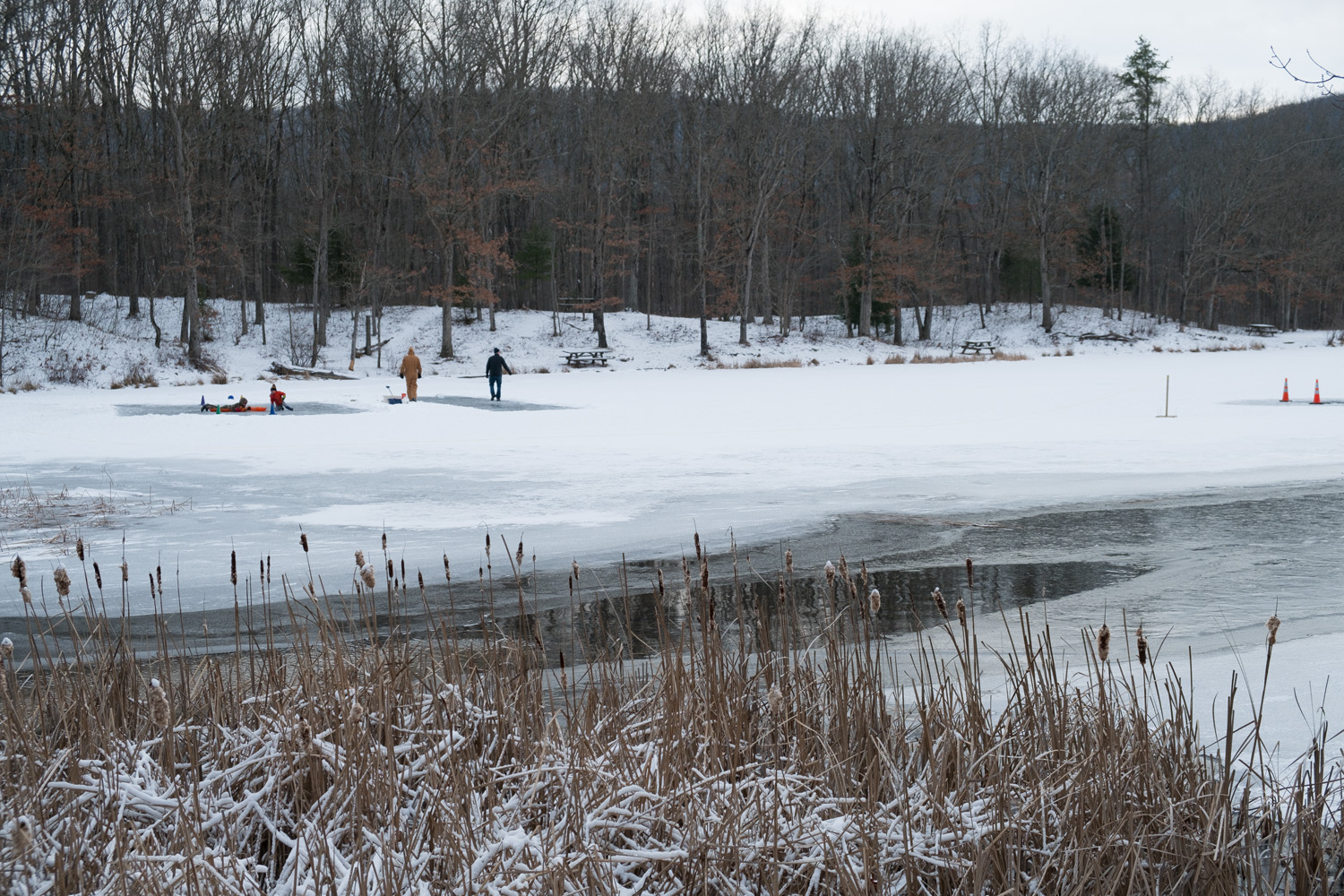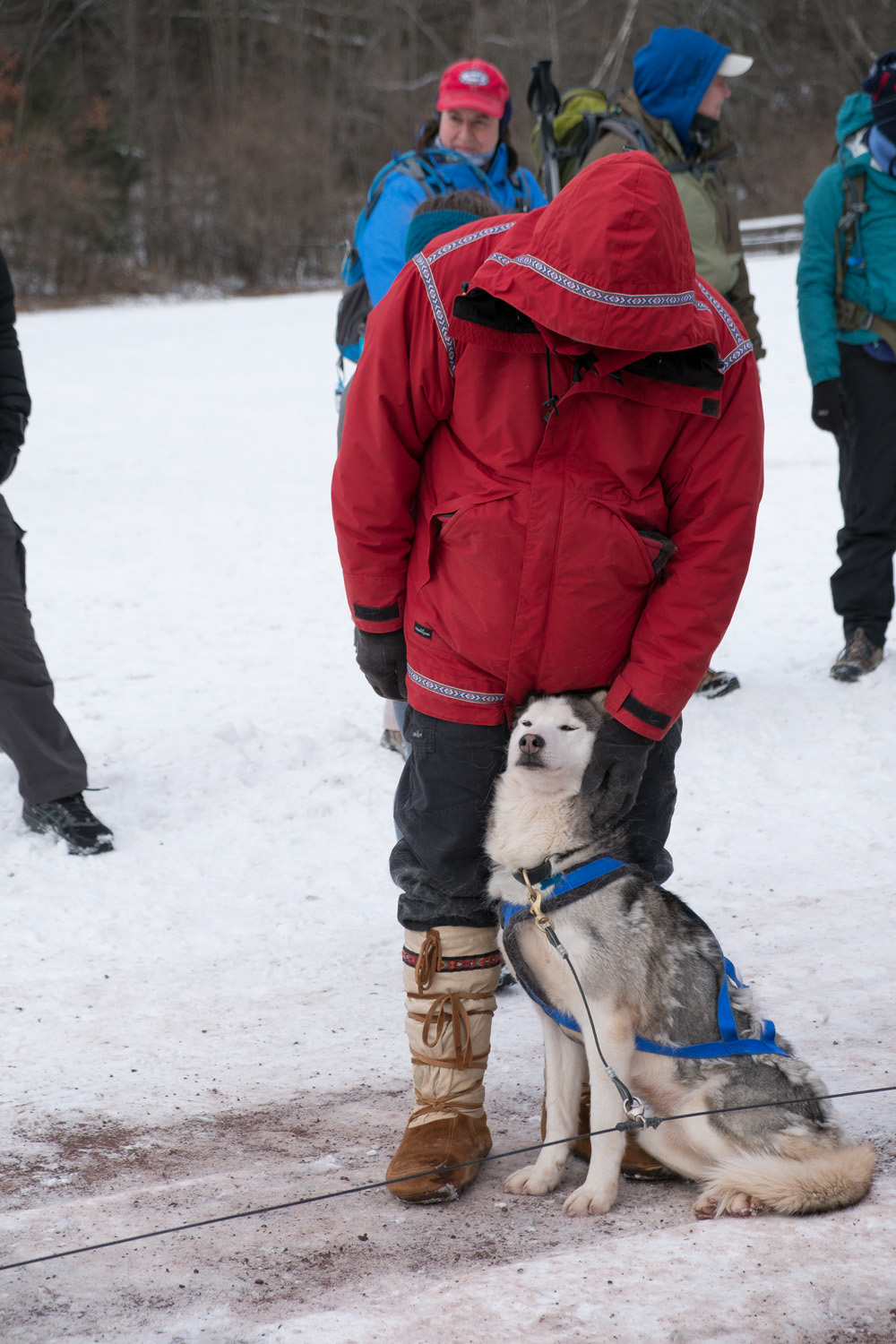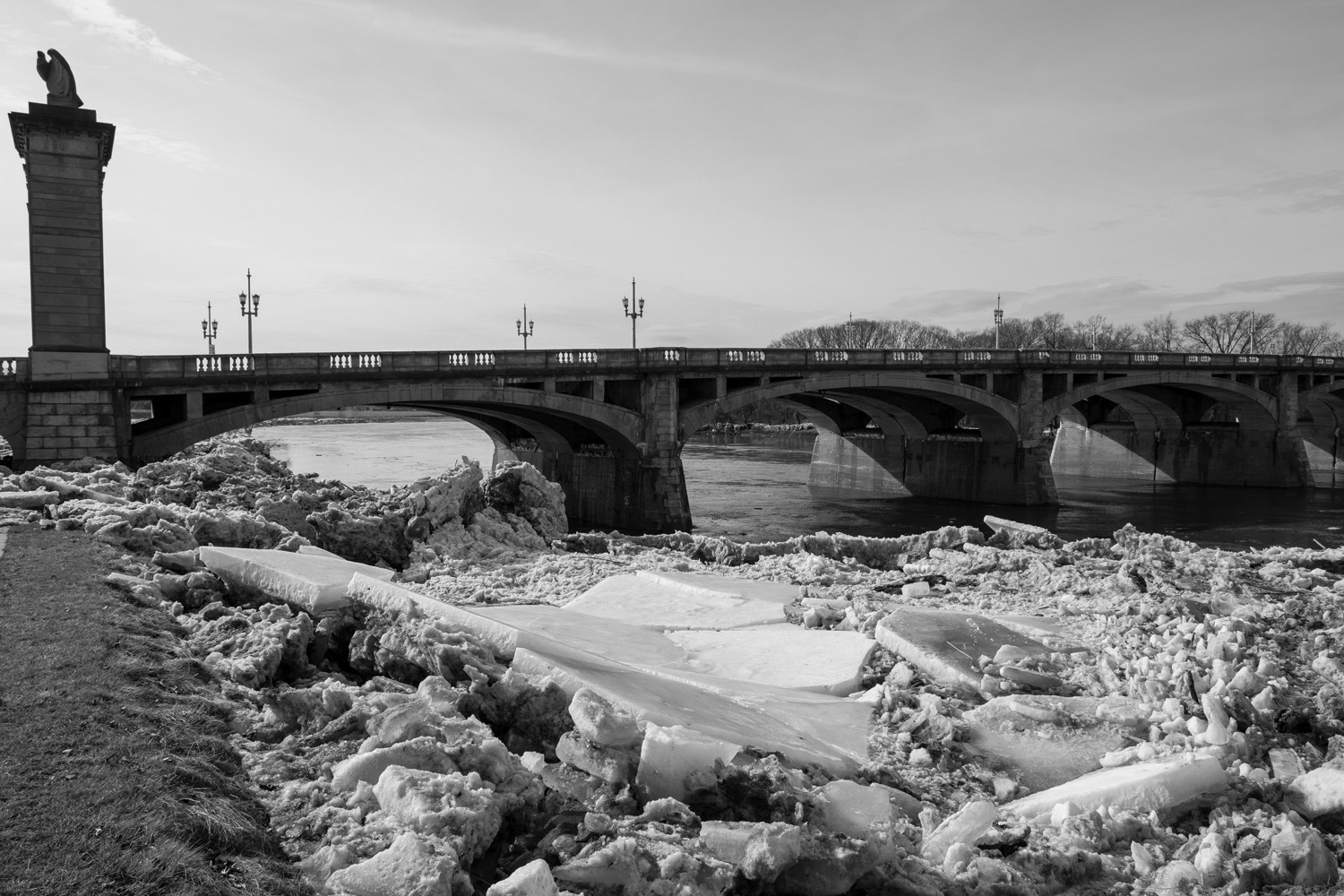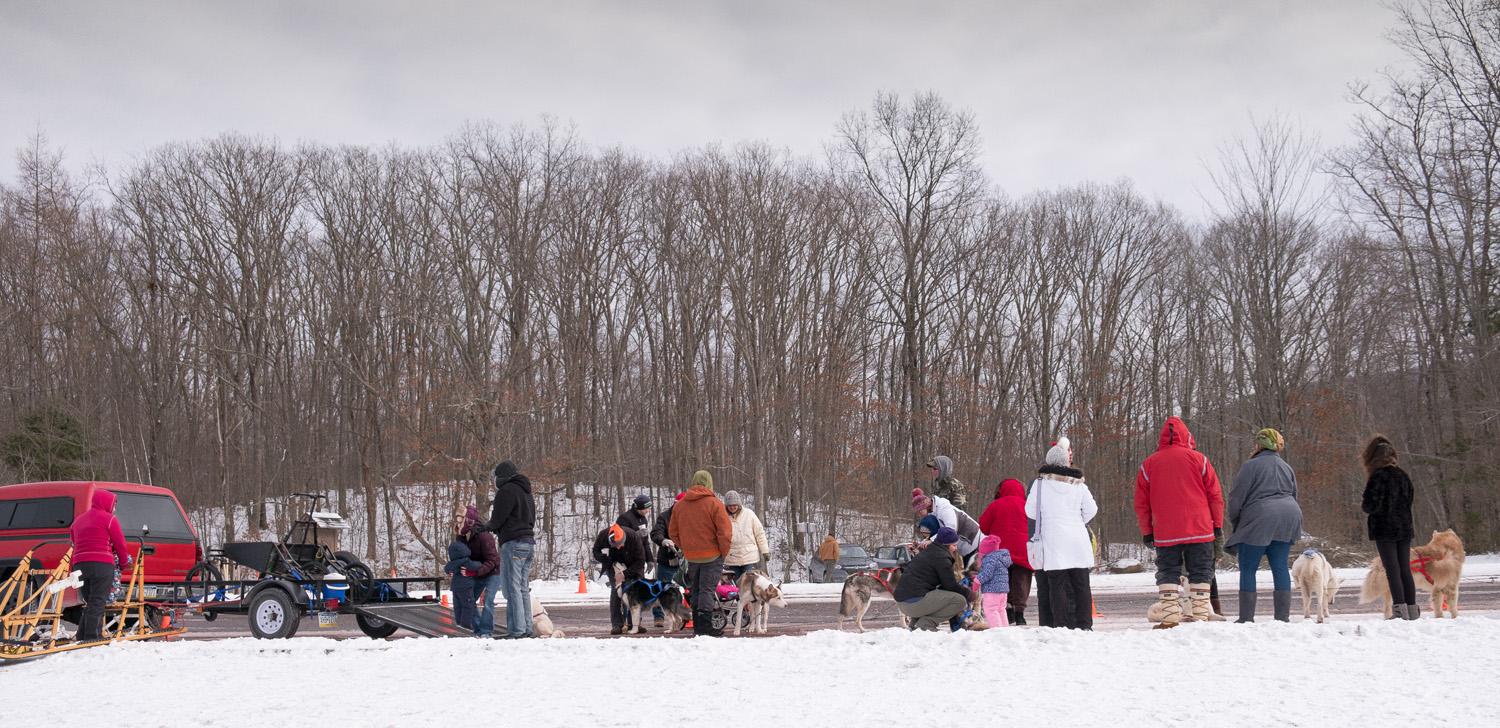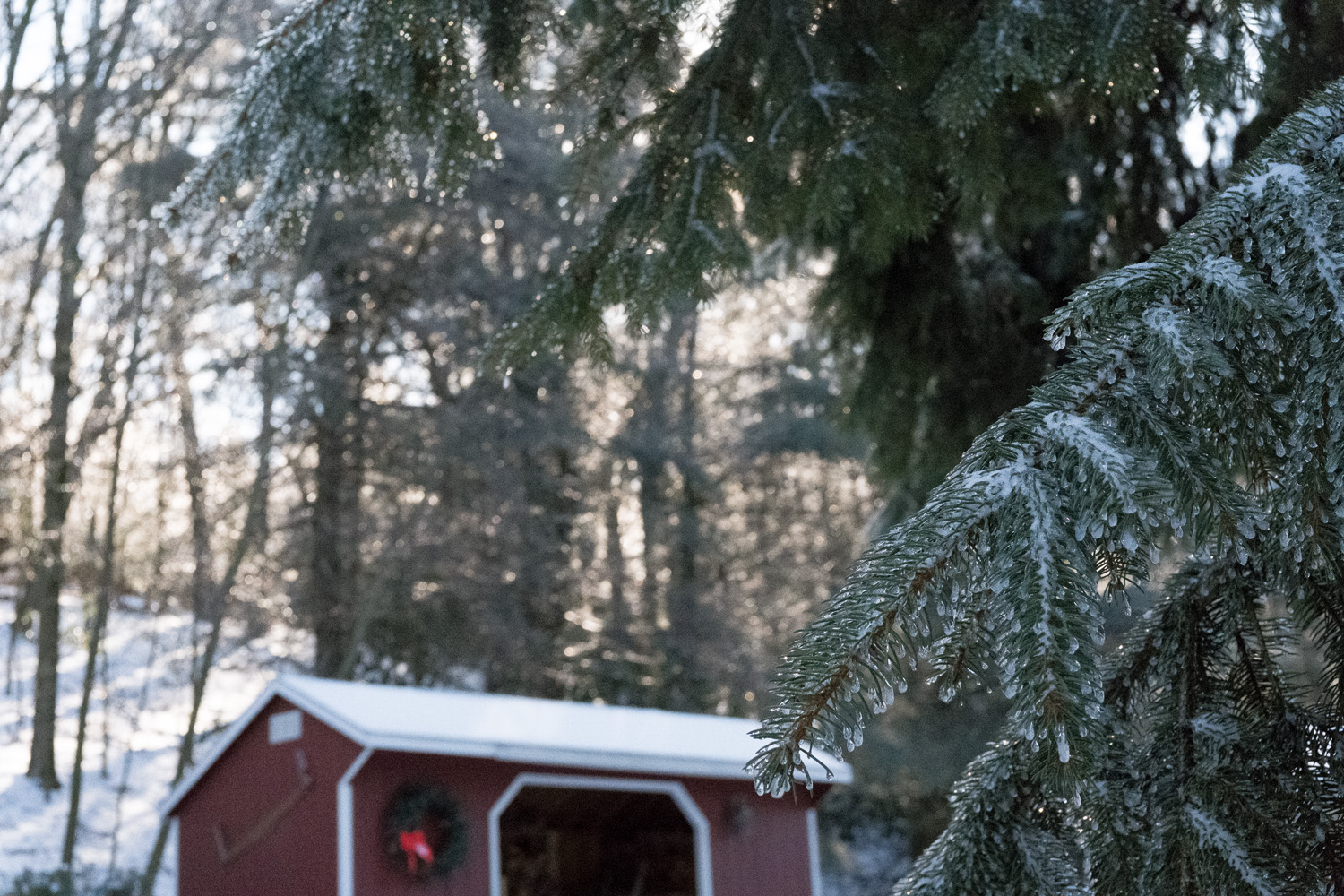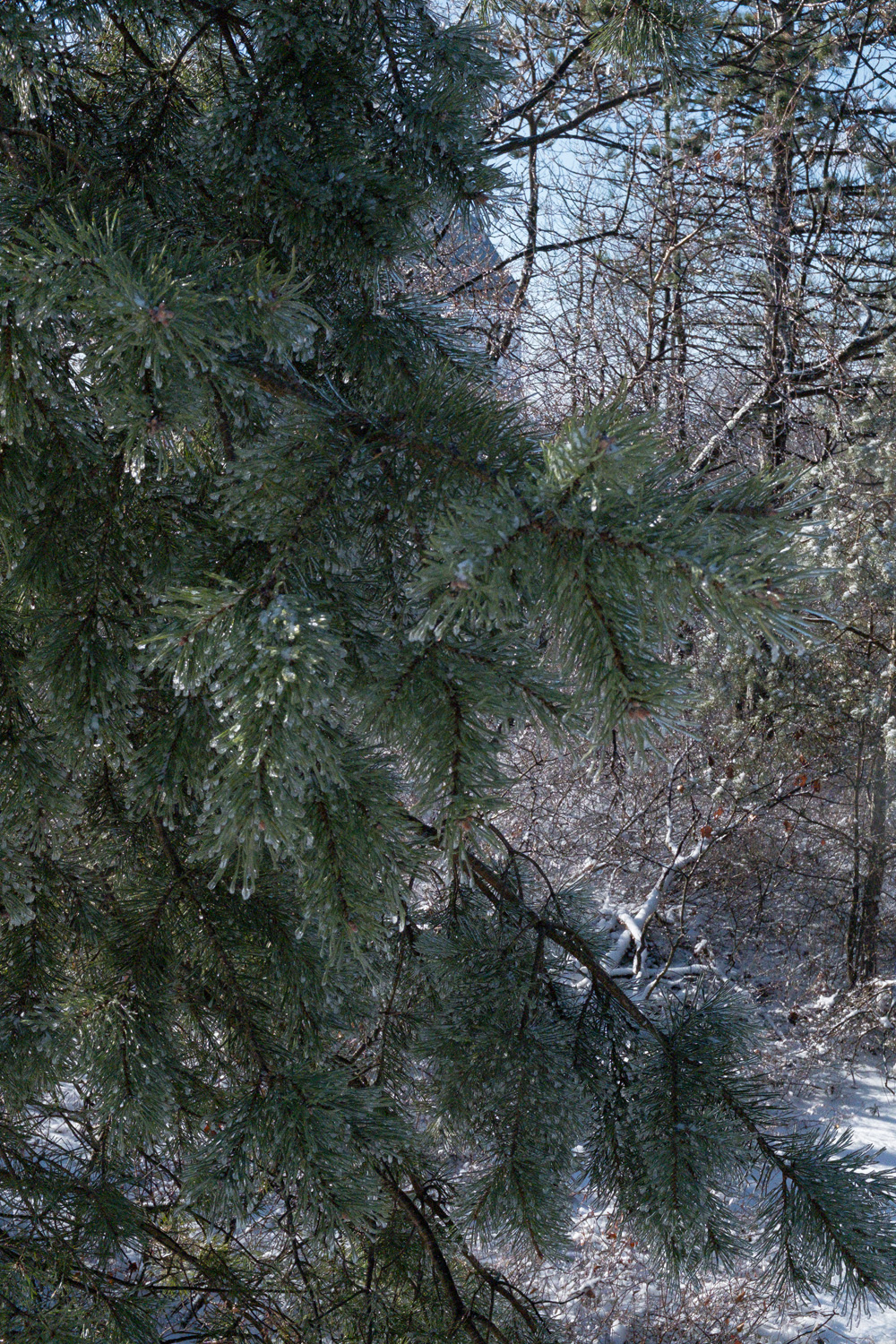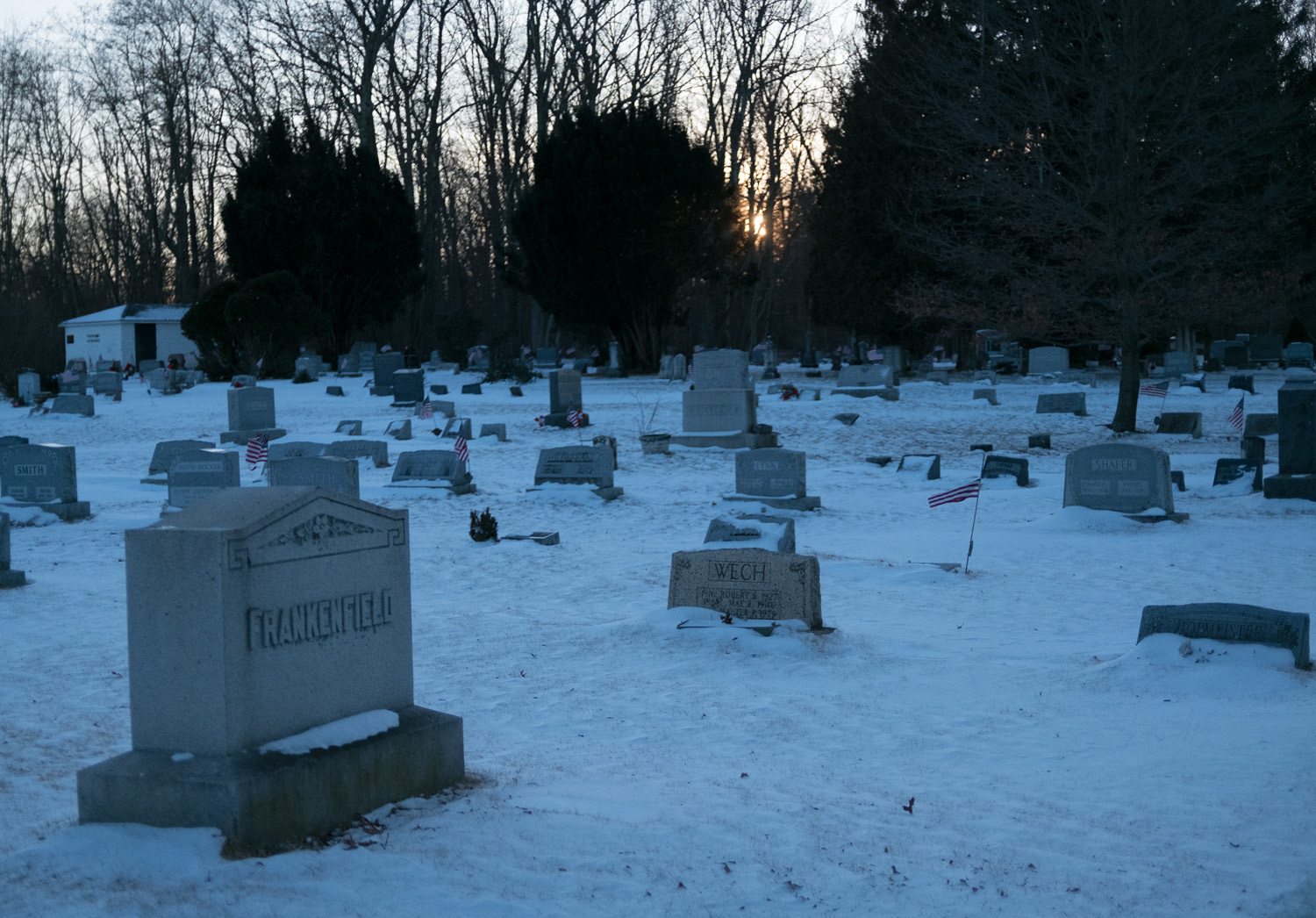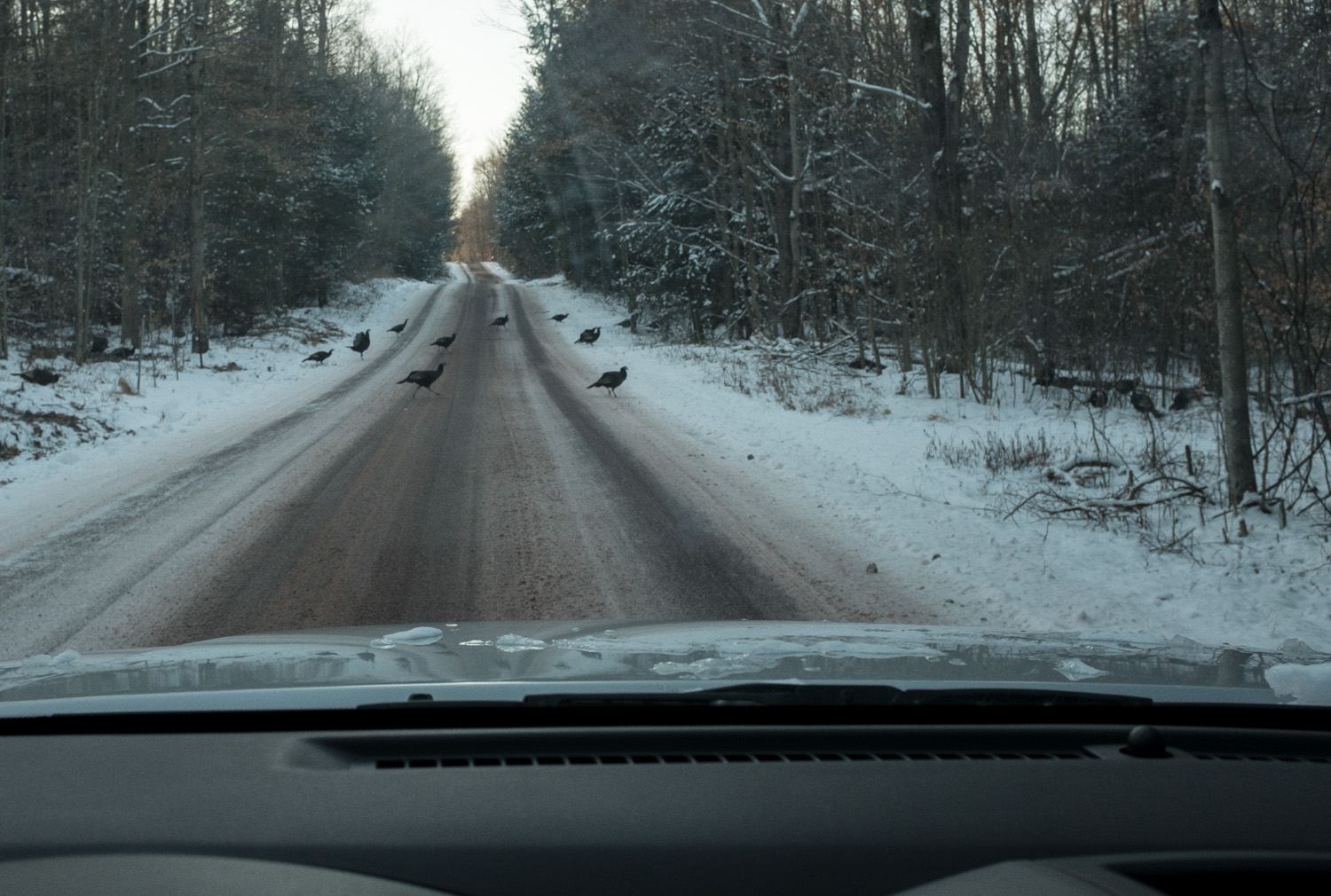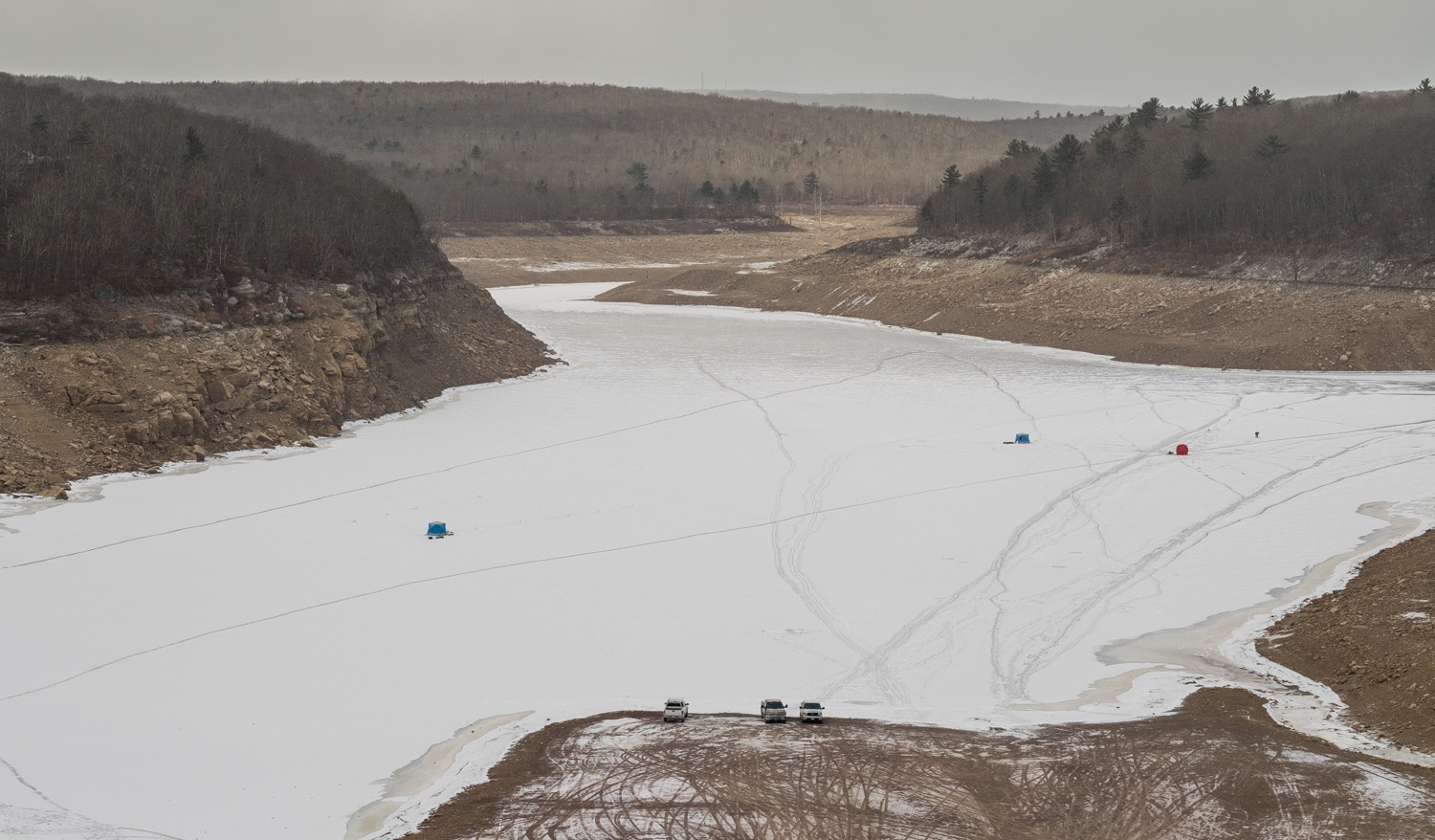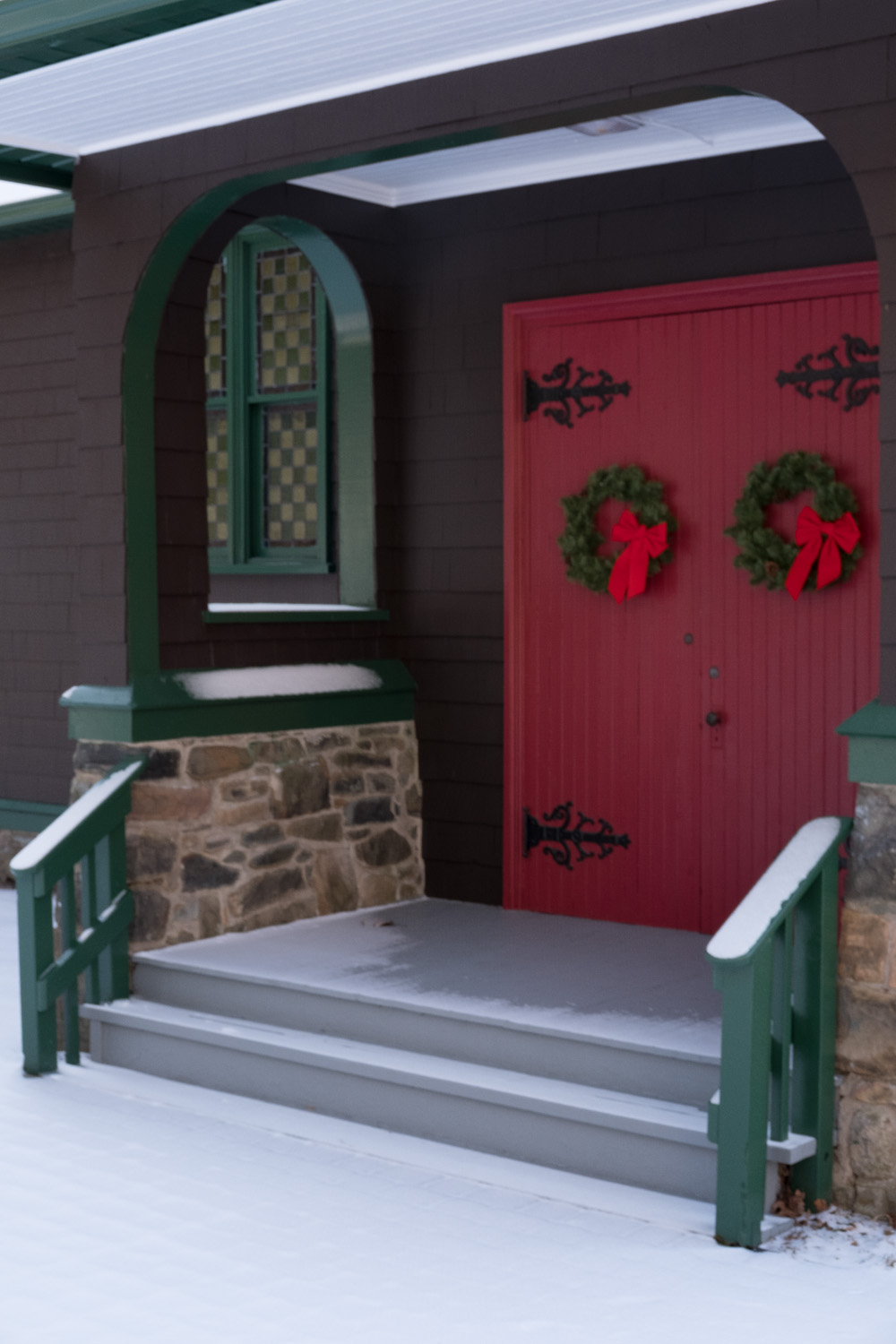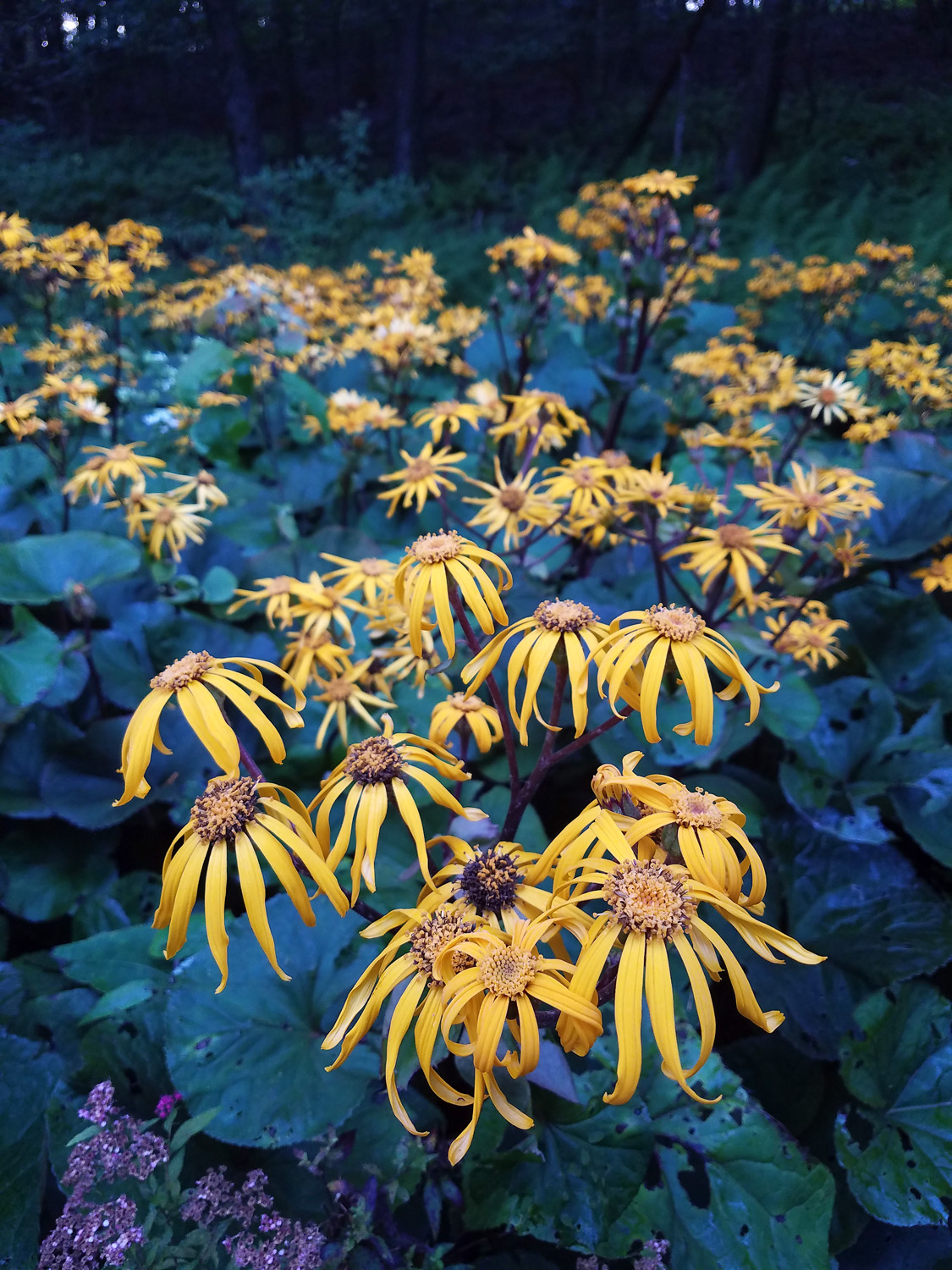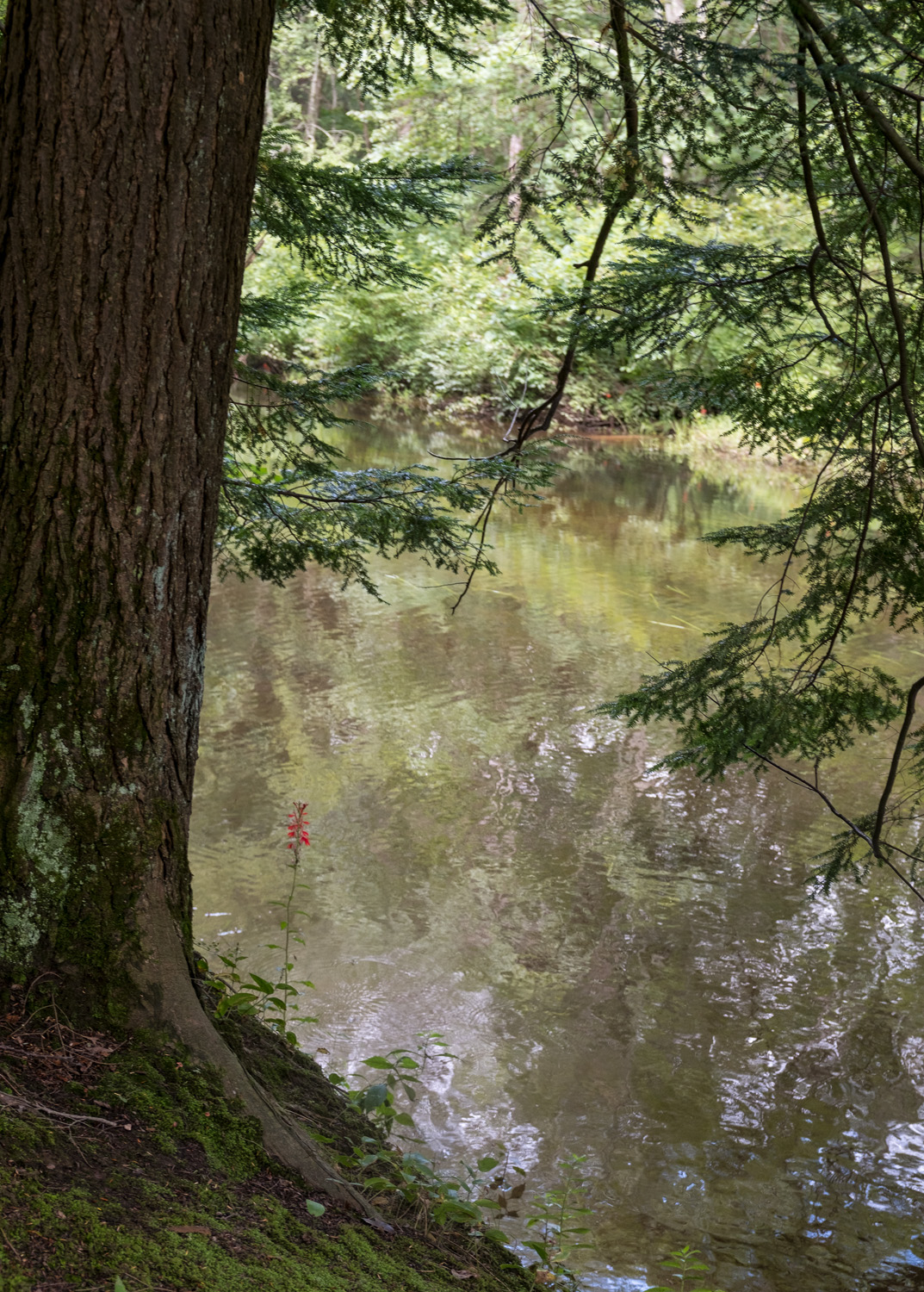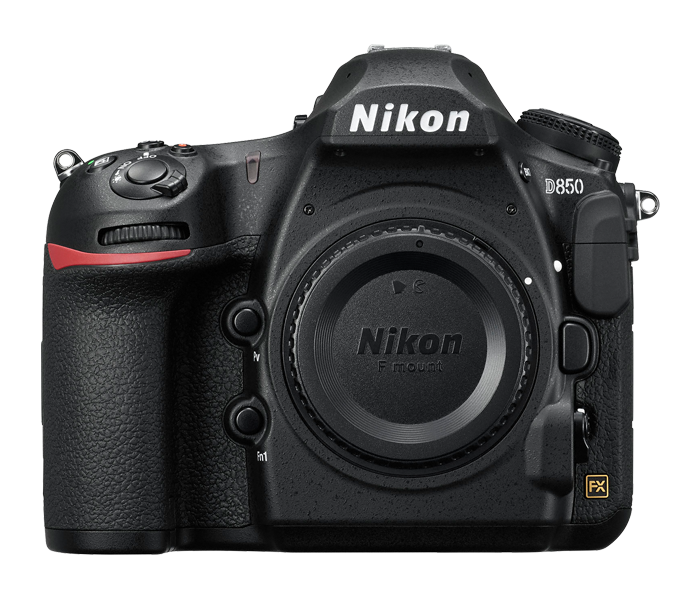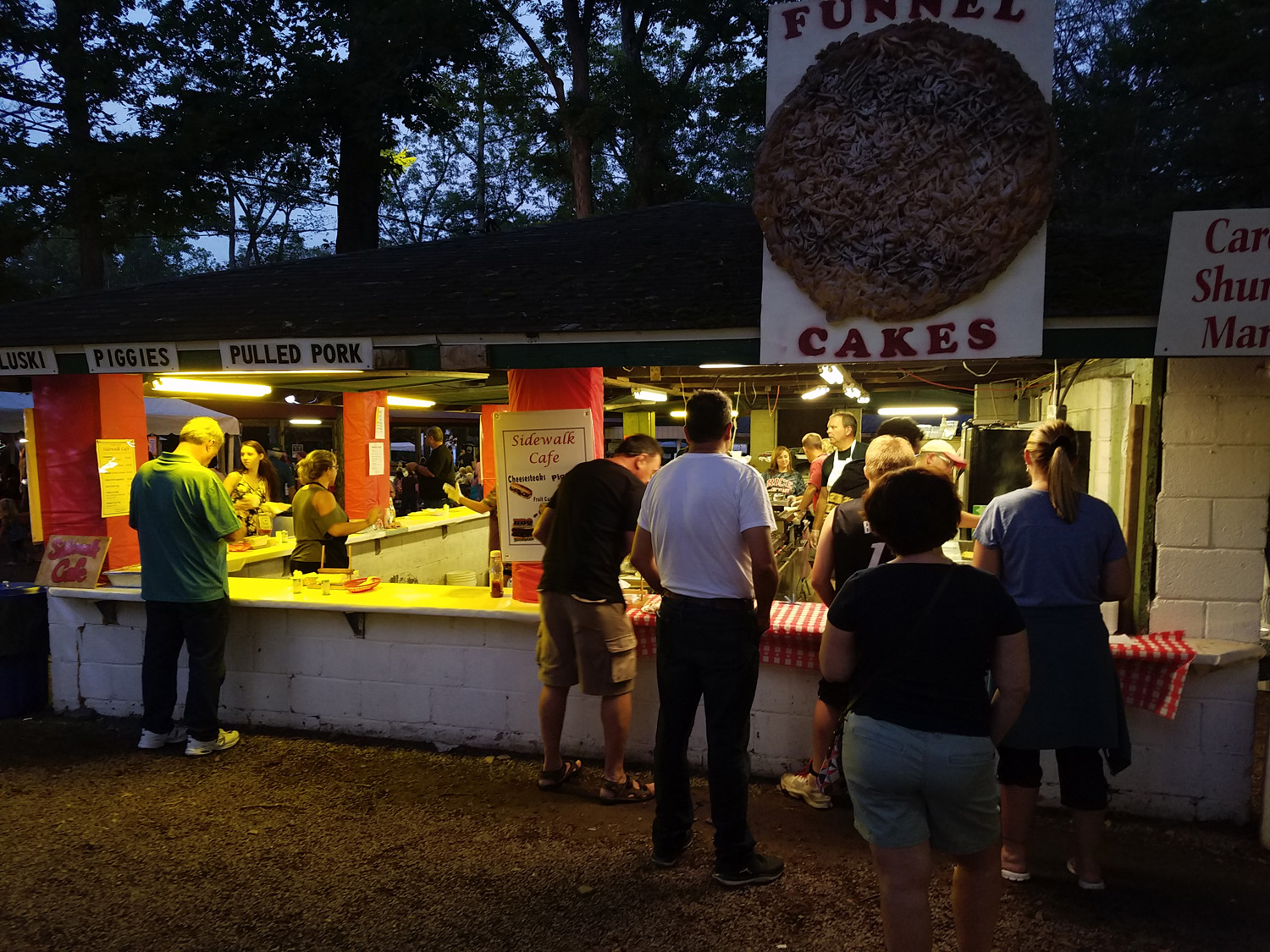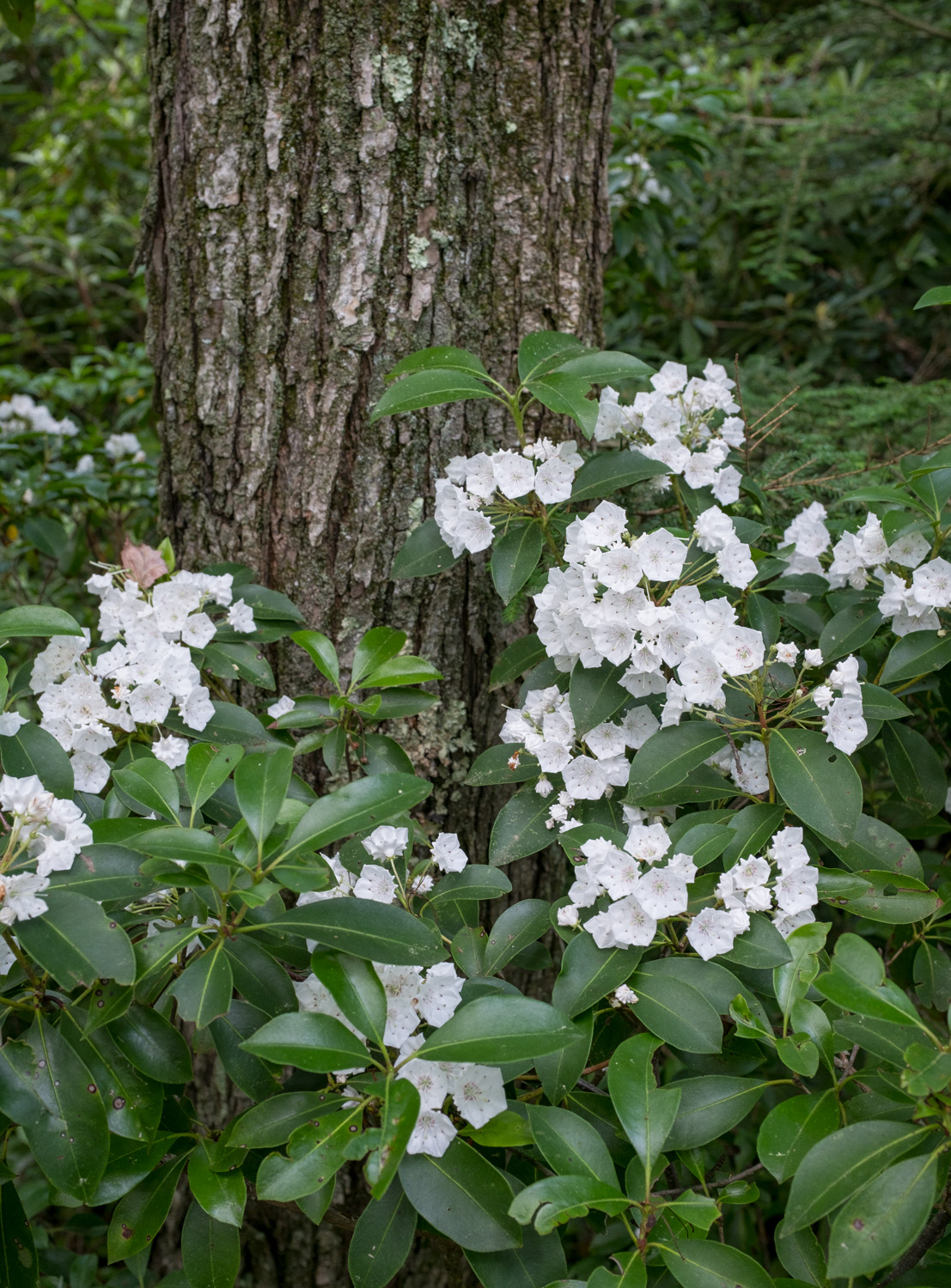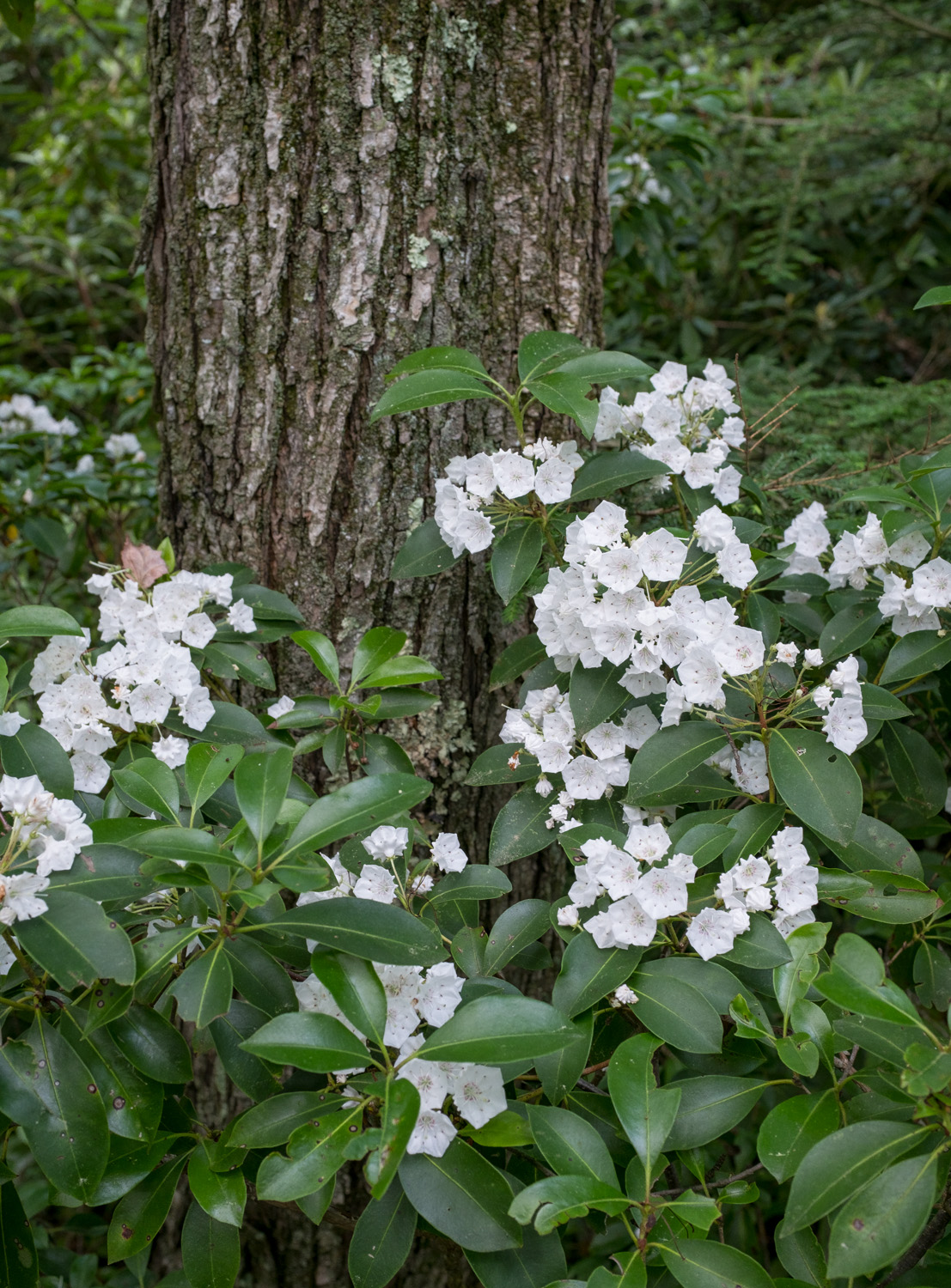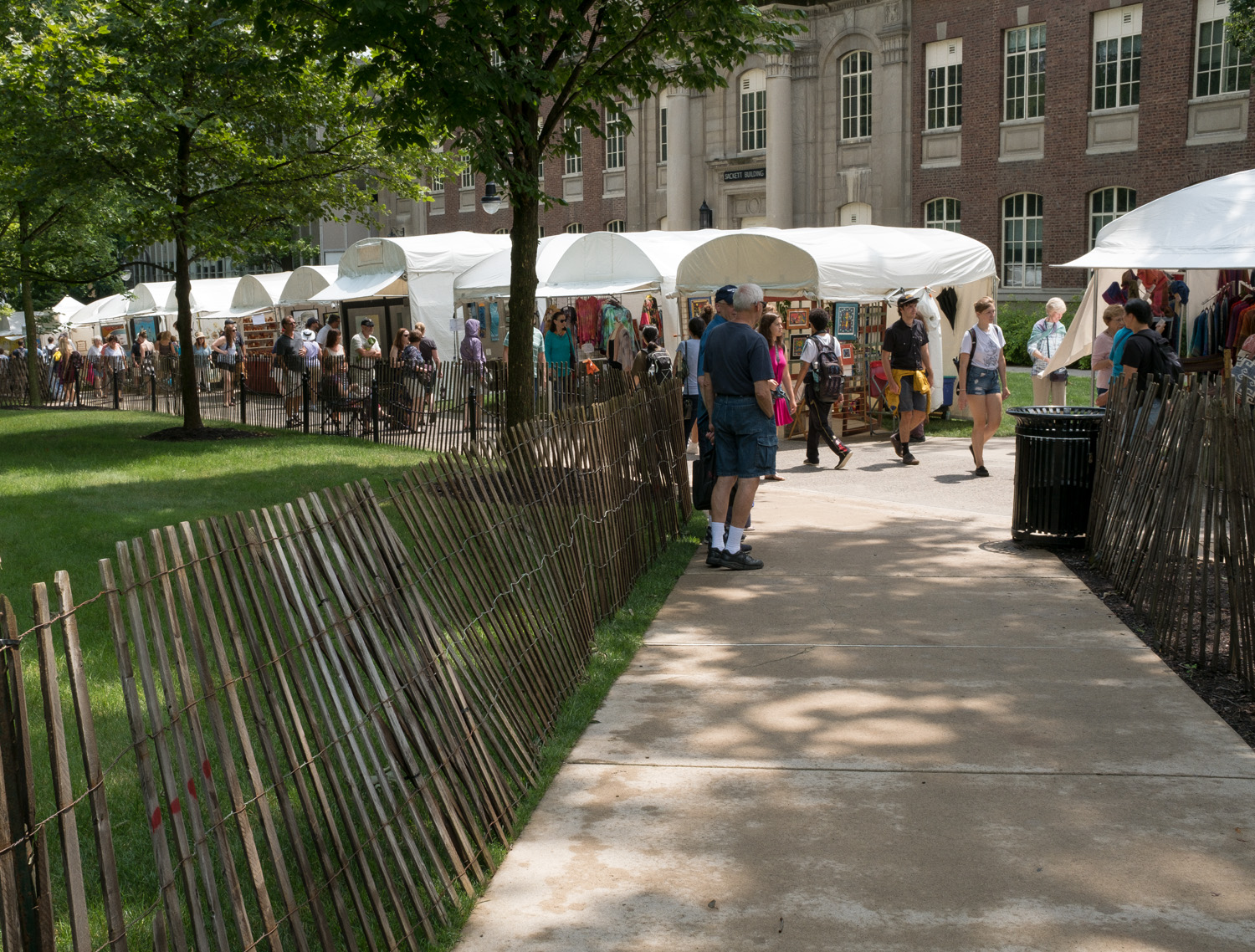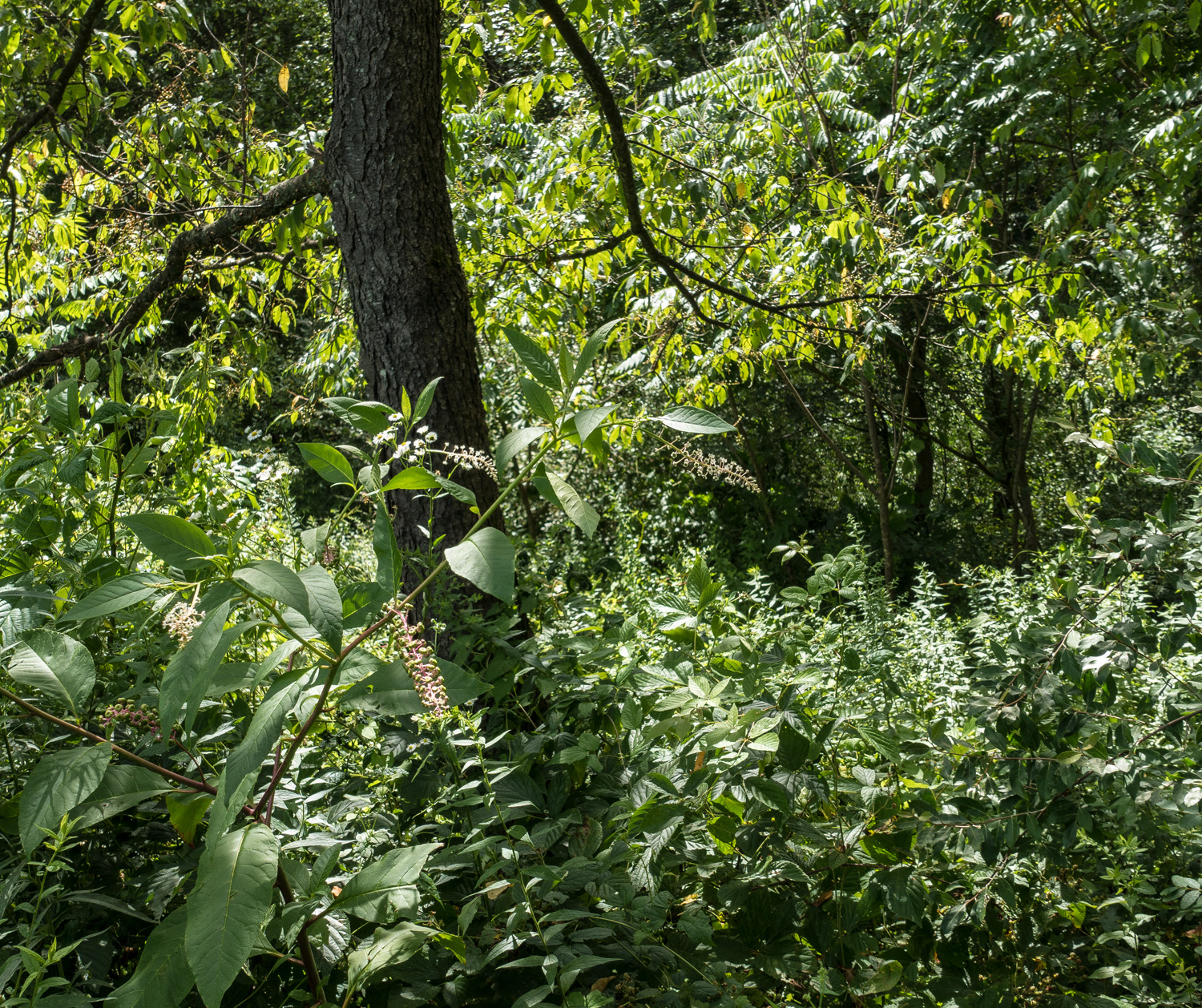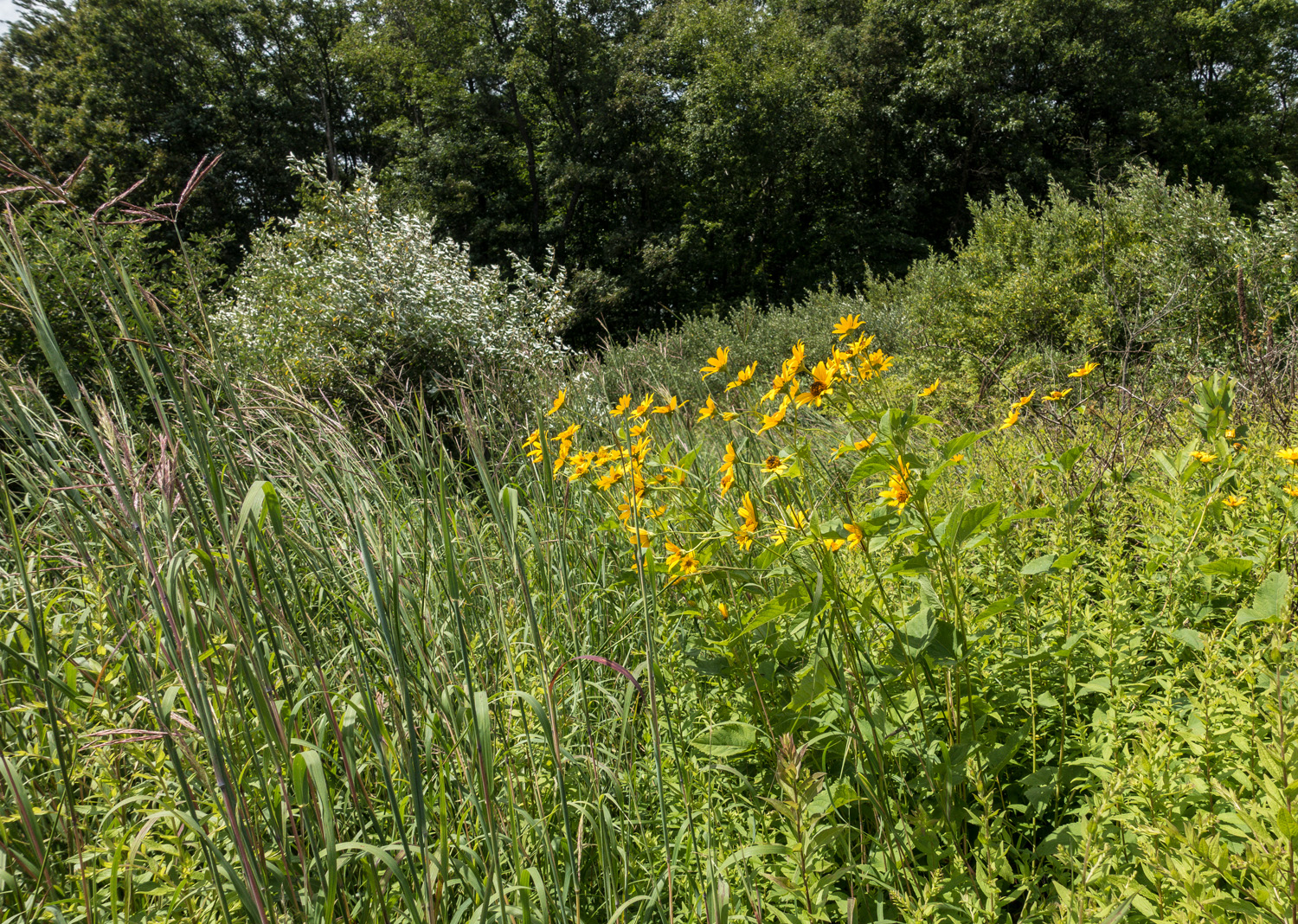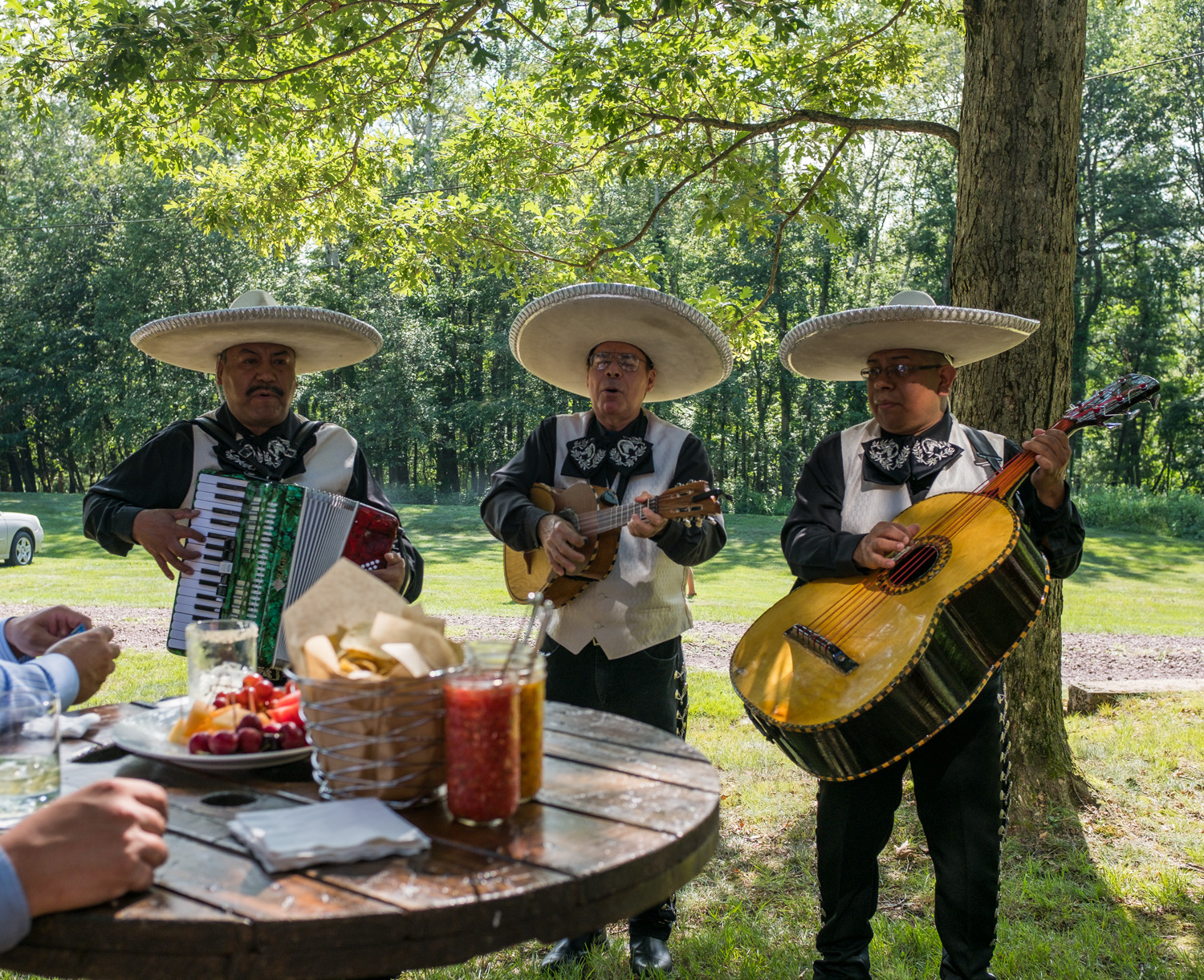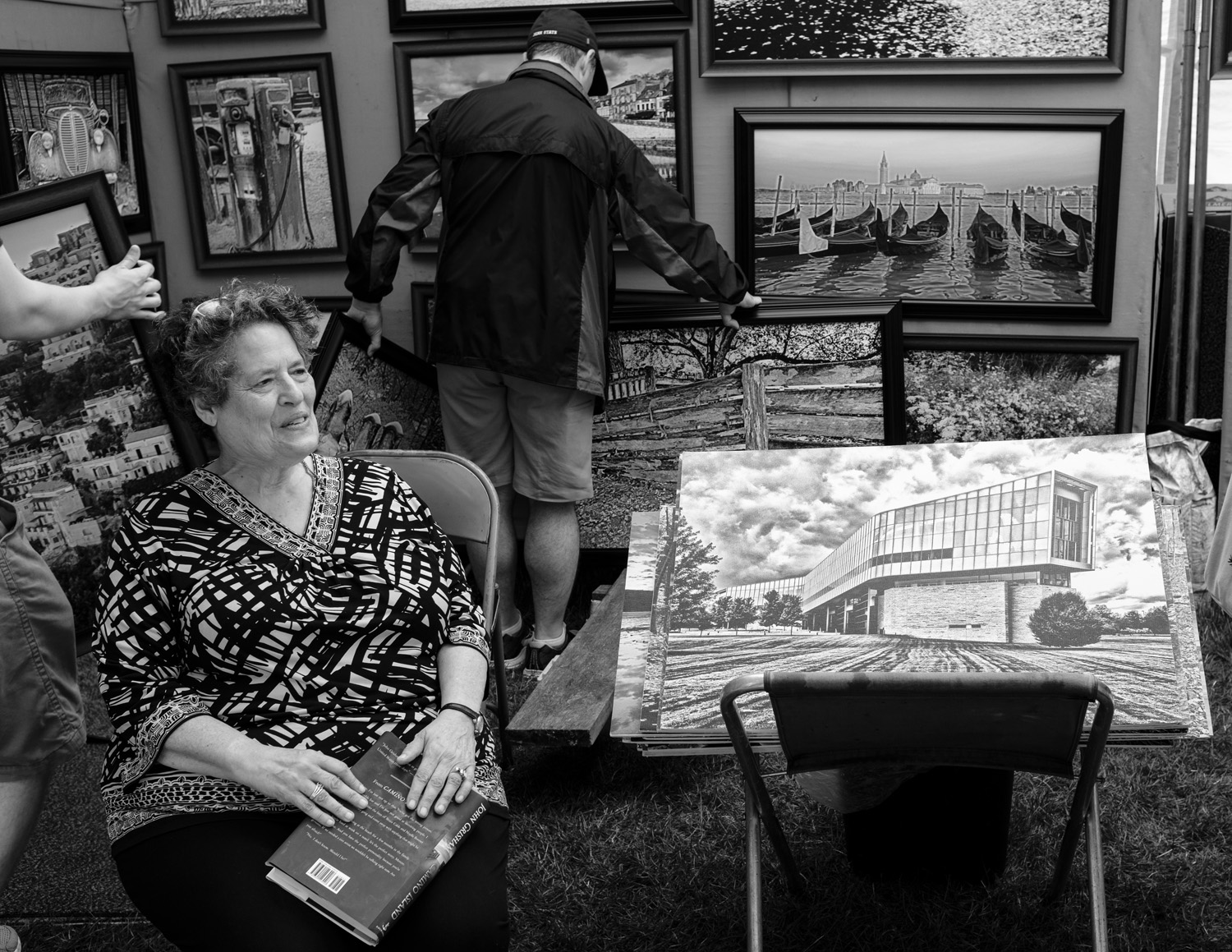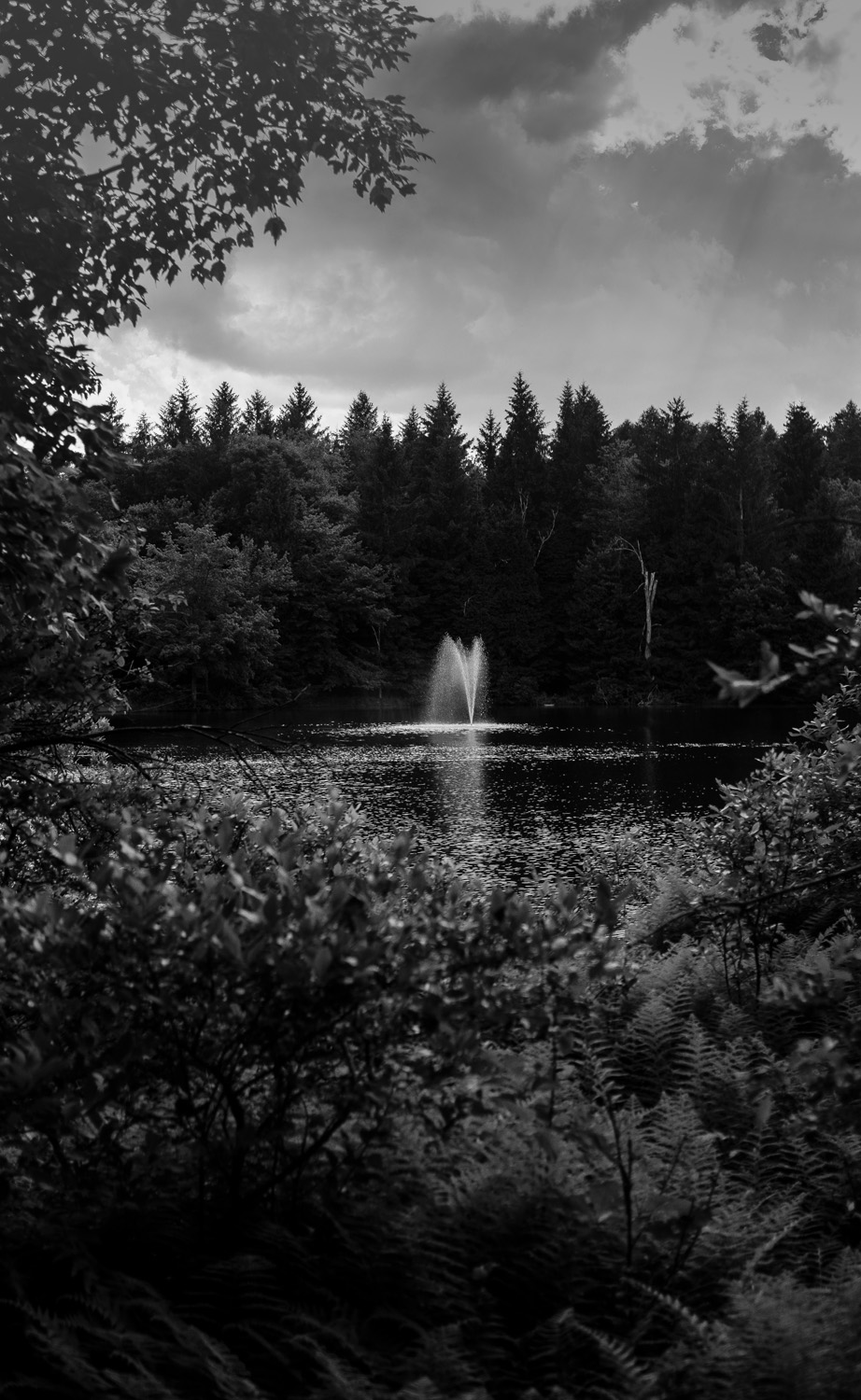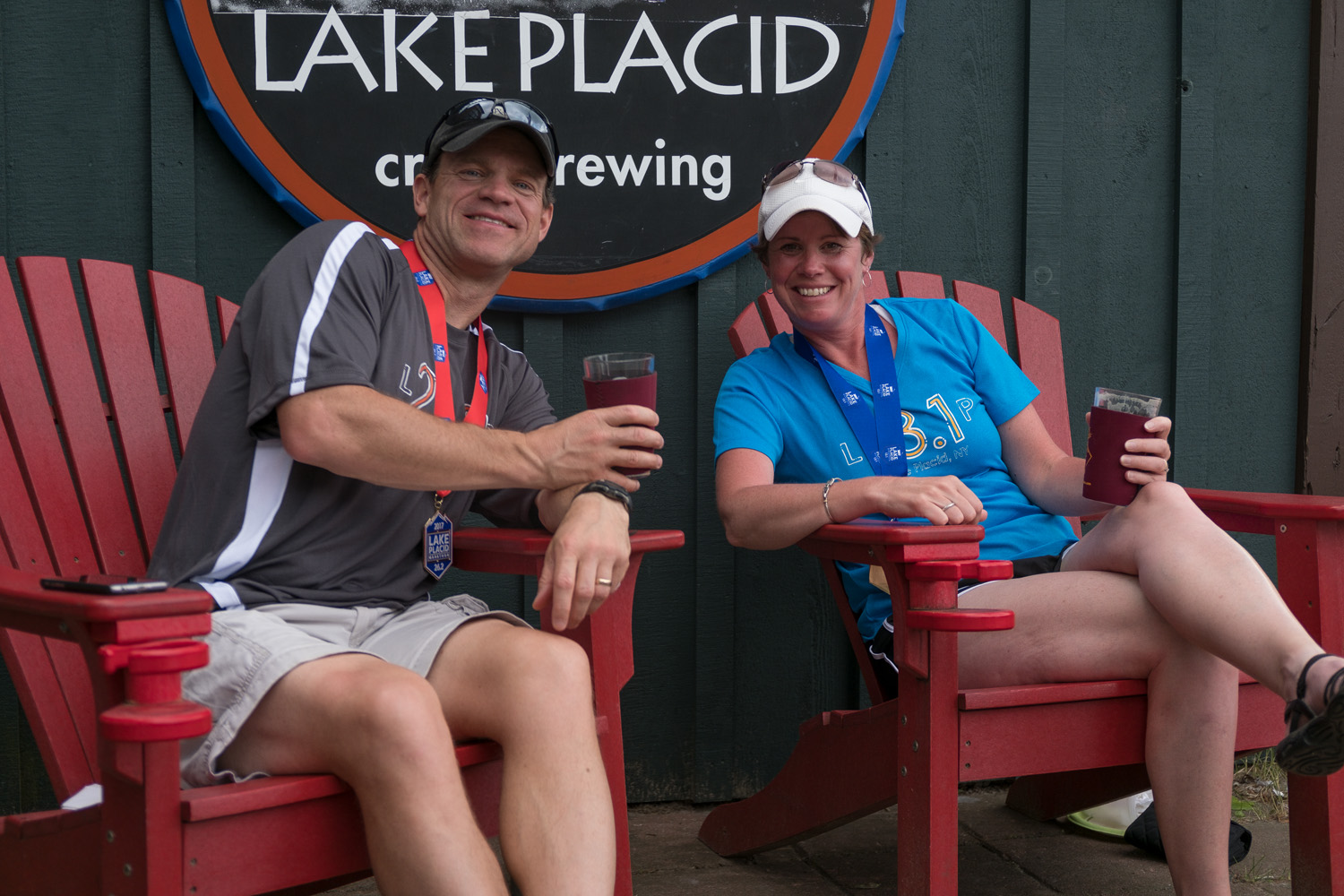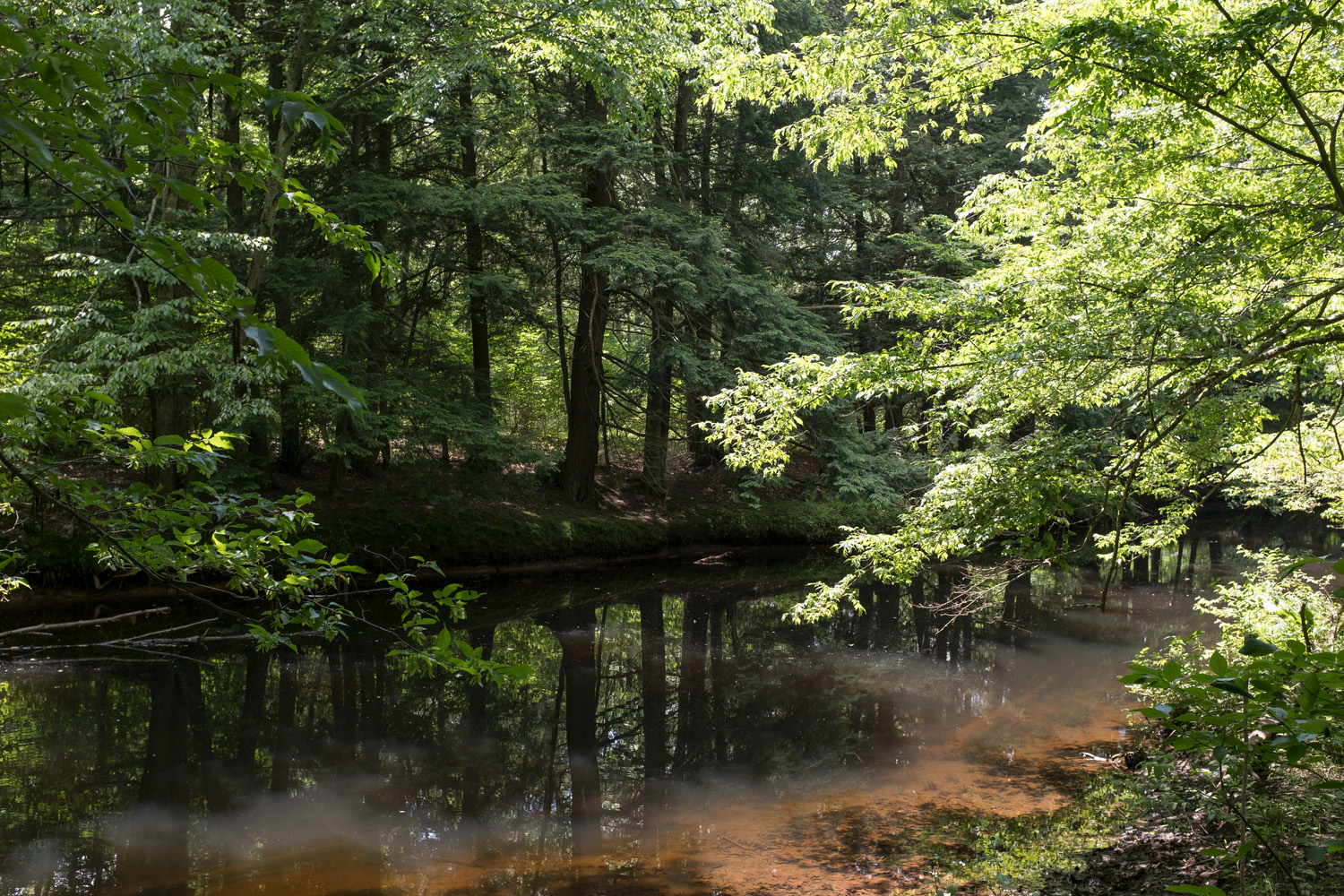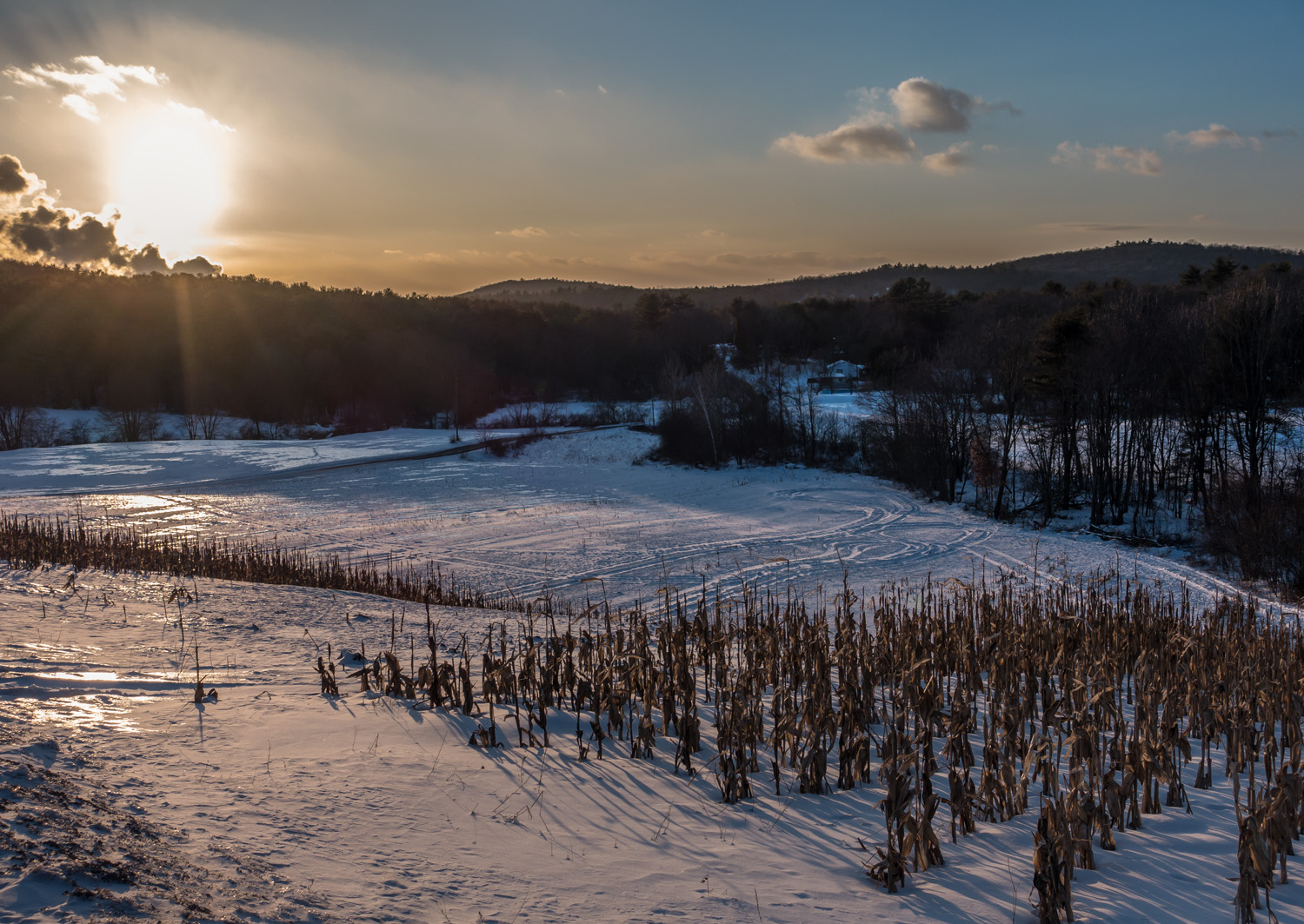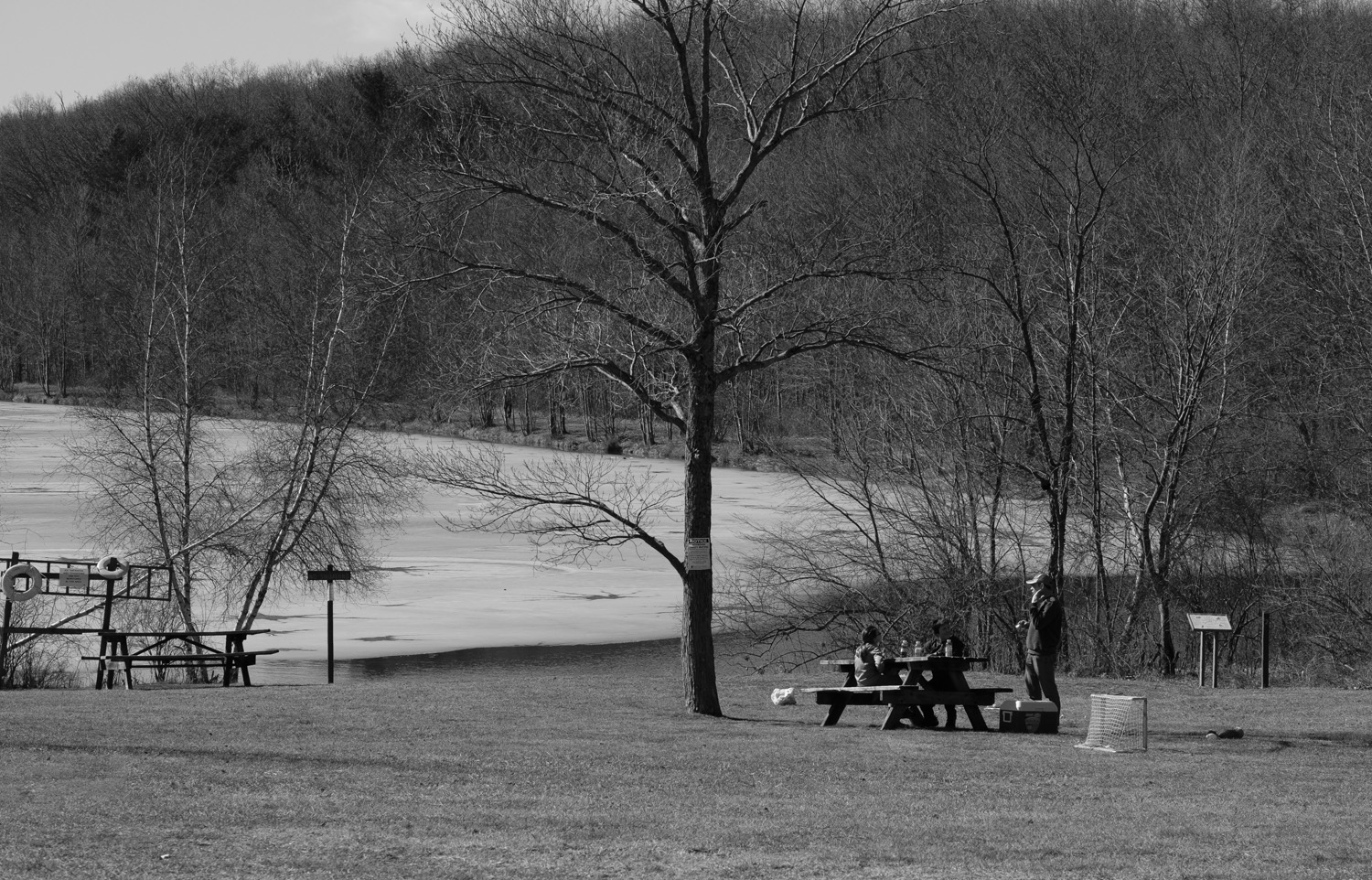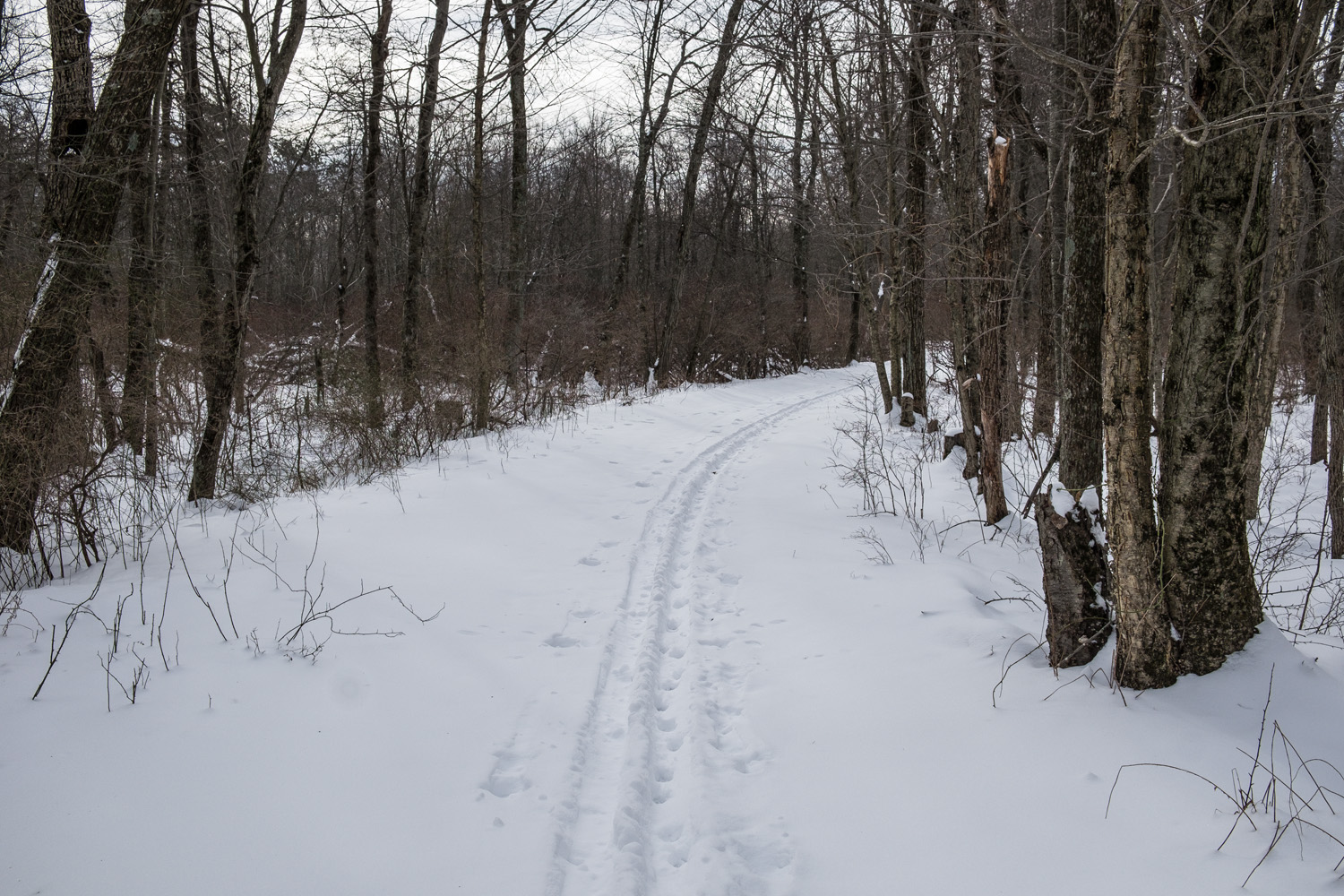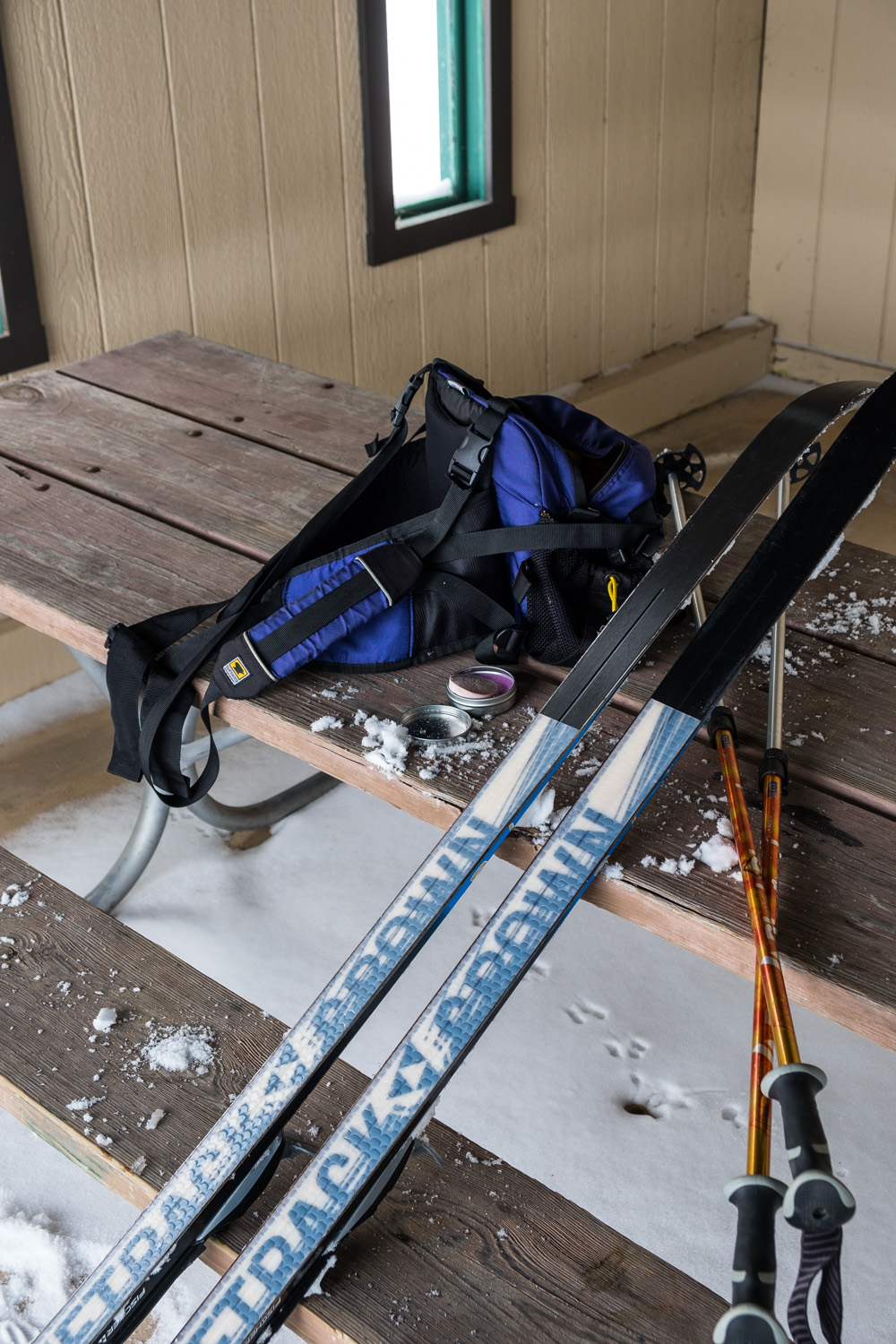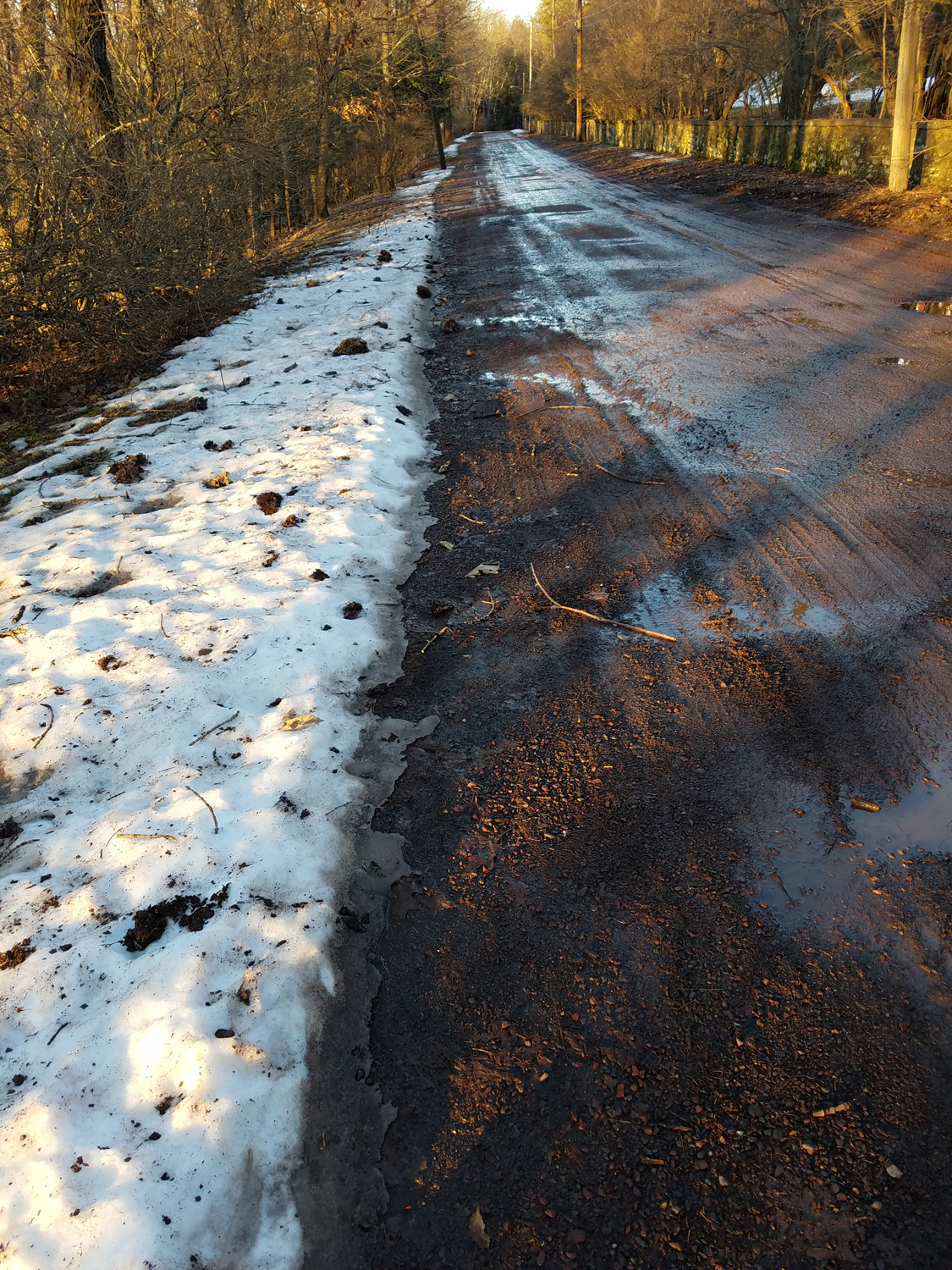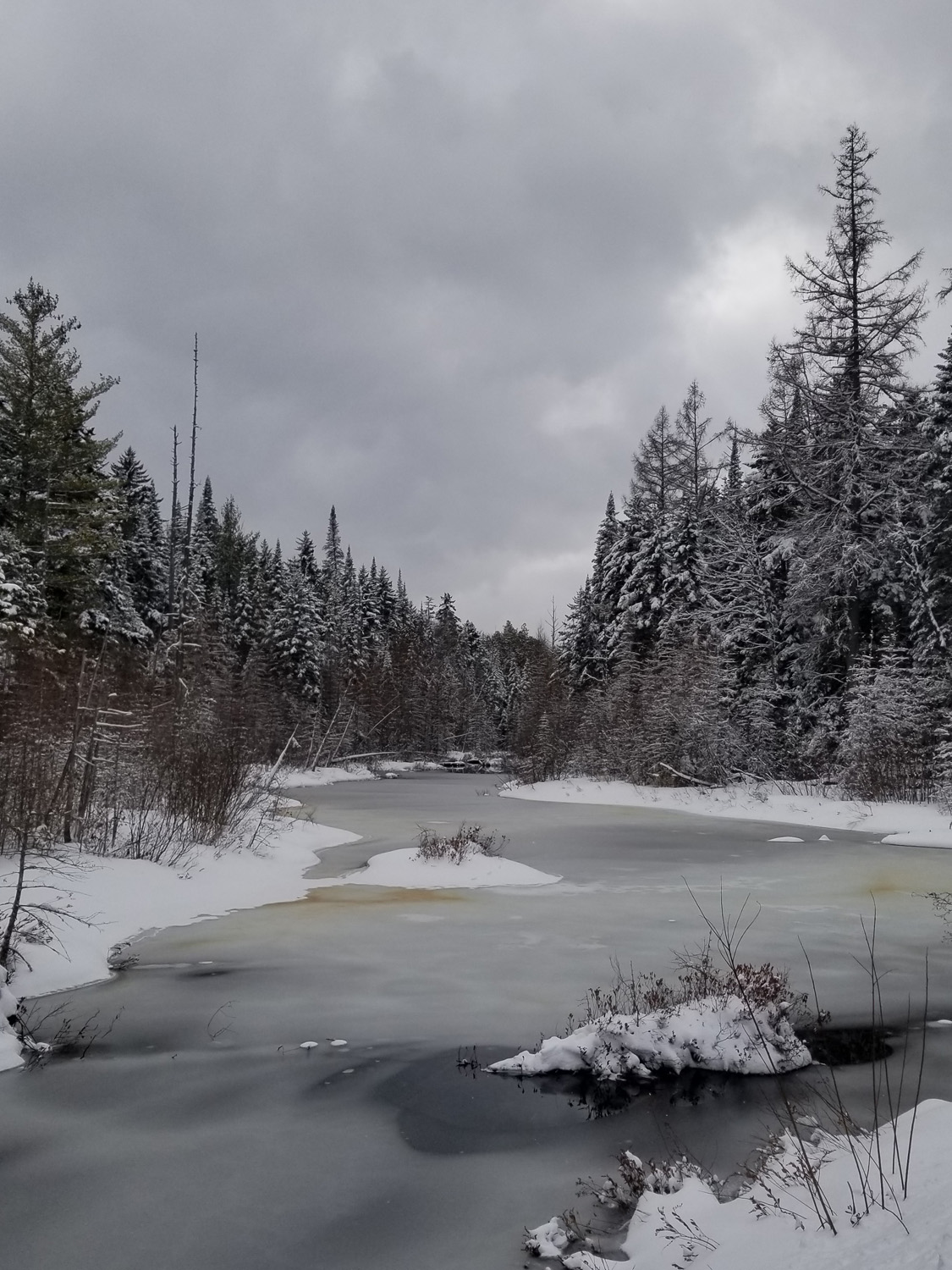
The scene at Deer Creek (Samsung Galaxy S8)
The winter of 2017-18 is over. At least chronologically.
As I write this, it is the first full day of spring. For the third time this March, a Nor’easter has formed off the coast of the Outer Banks and is making its way north.
It is now spreading snow over the Appalachians, and points east. Forecasts for this storm have been wavering, but I think that between 2 and 6 inches over the elevation or I reside is likely (5″ eventually fell). Though I do yearn for spring, the upcoming weekend is forecast to be sunny and pleasant. It will likely offer one more opportunity for cross-country skiing before I put my equipment away.
It has been a strange winter.We had a little snow earlier in the year, and then extremely warm February. By groundhog day it seemed likely that we would drift right into spring (though the groundhog disagreed). Winter is cruel that way.
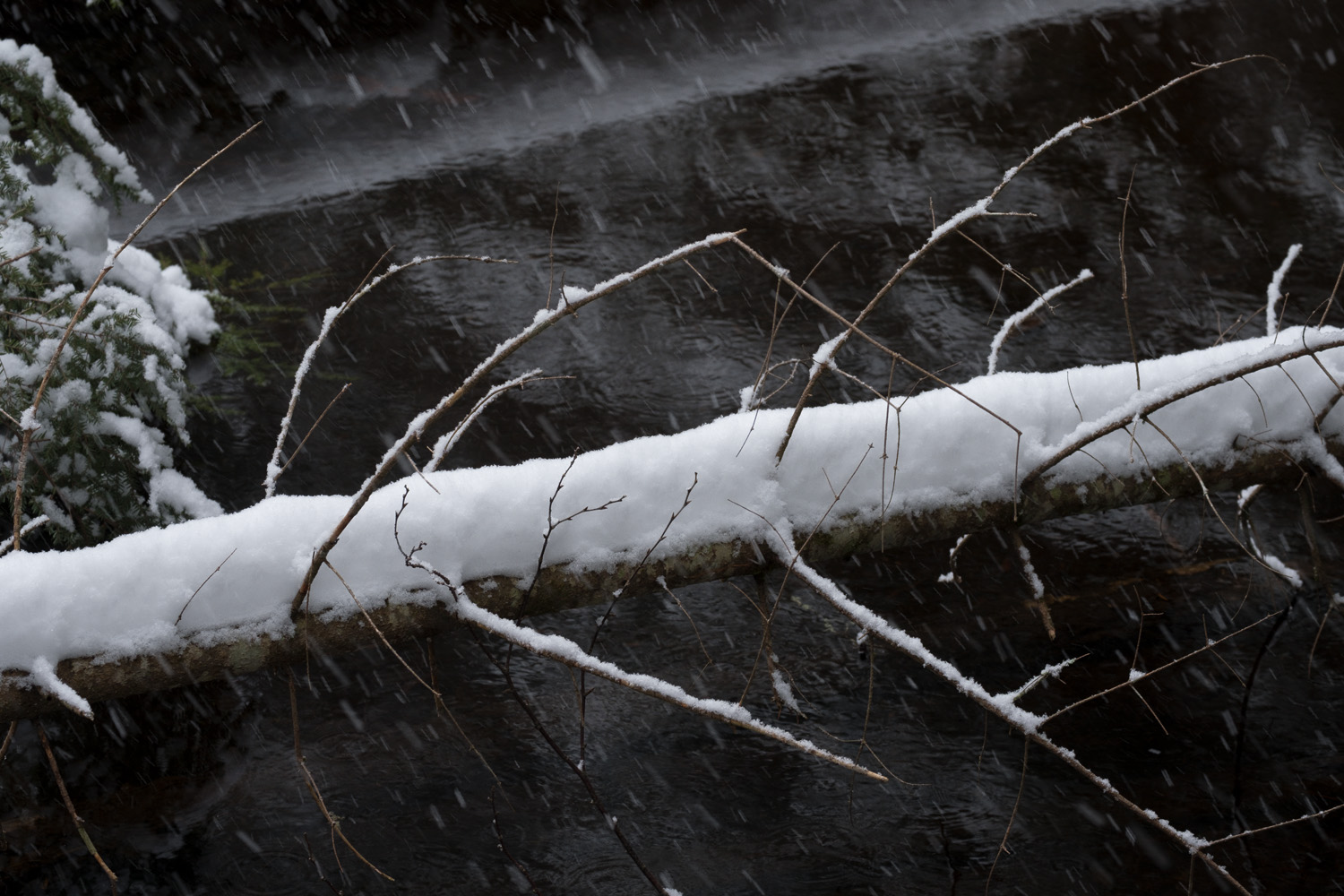
At the Long Lake Outlet (Fujifilm X Pro 2, XF 50-200mm OIS)
Then came March with its storms which in our part of the Poconos have maintained an adequate snowpack for recreation. Today’s storm continues that trend. And the warm weather, at least according to the meteorologists, is not yet in sight.
The last several months have been a busy time. Given my position as a pulmonary physician, this winter’s flu epidemic kept me on my toes, running between patient rooms, gowning and re gowning to avoid the spread of the virus to other patients and hospital staff. I have been overseeing some renovations at my home, including a new home office and photo studio. Earlier in March, I spent my usual late winter week in the Adirondacks. There was plenty of snow for skiing and snowshoeing as well as photography. This will serve as my excuse for the lack of attention to the site over the past month or so. Now happily, the flu epidemic has waned, and my renovations are largely done. It’s time to put pen to paper (so to speak).
In the time since my last article, mindful of my good experience with the rather modest XF 18–55mm zoom legacy lens, I focused my attention on its bigger brother, the XF55-200mm f3.5-4.8 OIS zoom that hearkens from the same time period. I have written about this lens before. Ironically, I published its original review almost exactly the same time of year back in 2014. Now with the higher resolution sensors available on newer Fujifilm bodies, it was worth digging out of my roomy new equipment cabinet for a second look.
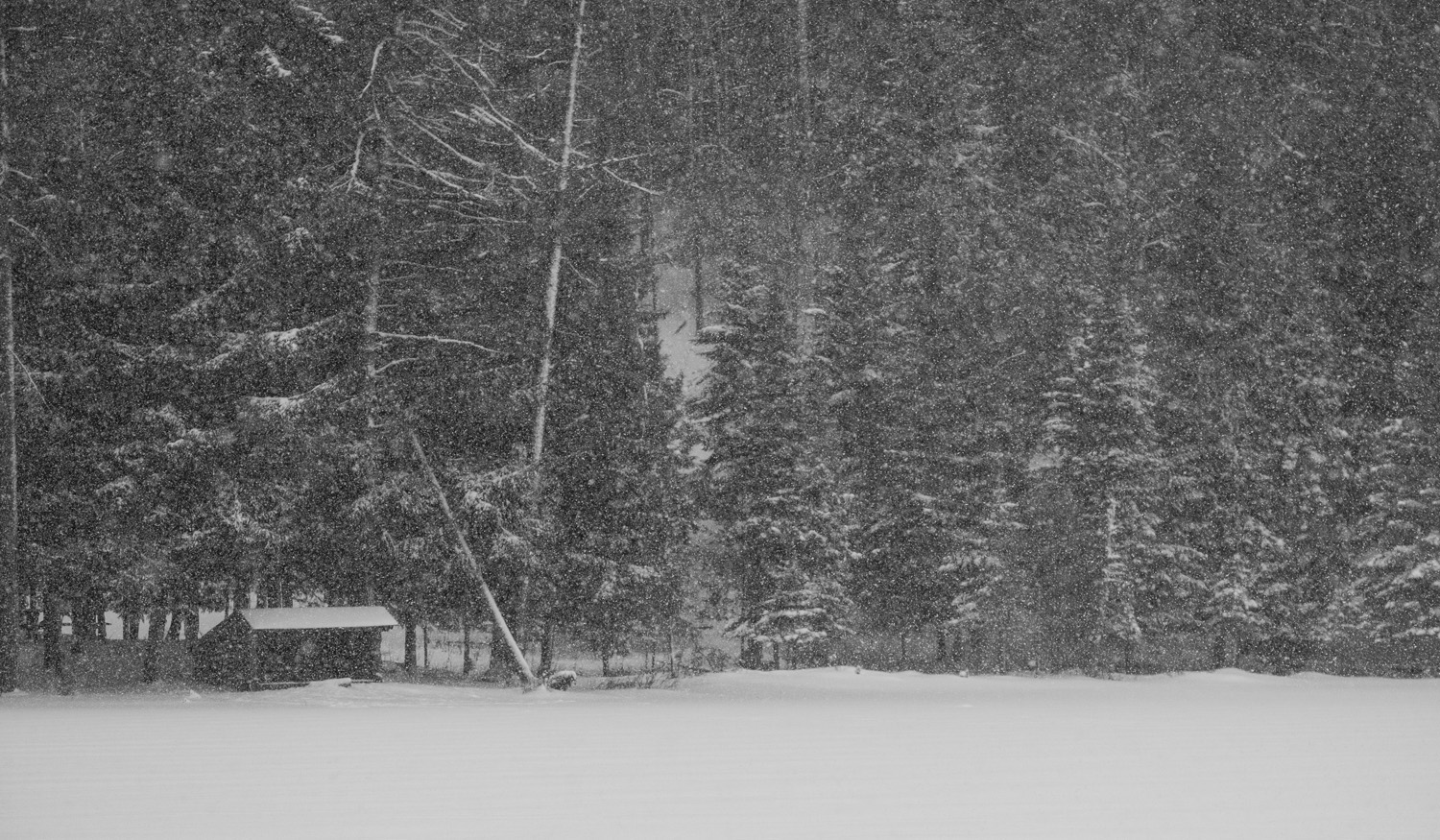
Lean-to at Black Lake (Fujifilm X Pro 2, XF 50-200mm OIS)
Over the years, this is proven to be a fairly rugged lens. Though I used it fairly frequently in its early years, cosmetically it looks roughly the same as when I took delivery. At 55mm, and without its deep lens-shade, the lens is fairly compact, though it telescopes awkwardly as one increases the focal length. It tends to look weird on a rangefinder style body such as the X Pro 2, though it handles just fine.
The focus and aperture dials remain smooth after 4 years of ownership. The lens continues to exude high-quality. Though it is not officially weather-sealed, I have used it multiple times in rainy or snowy conditions without any difficulty.
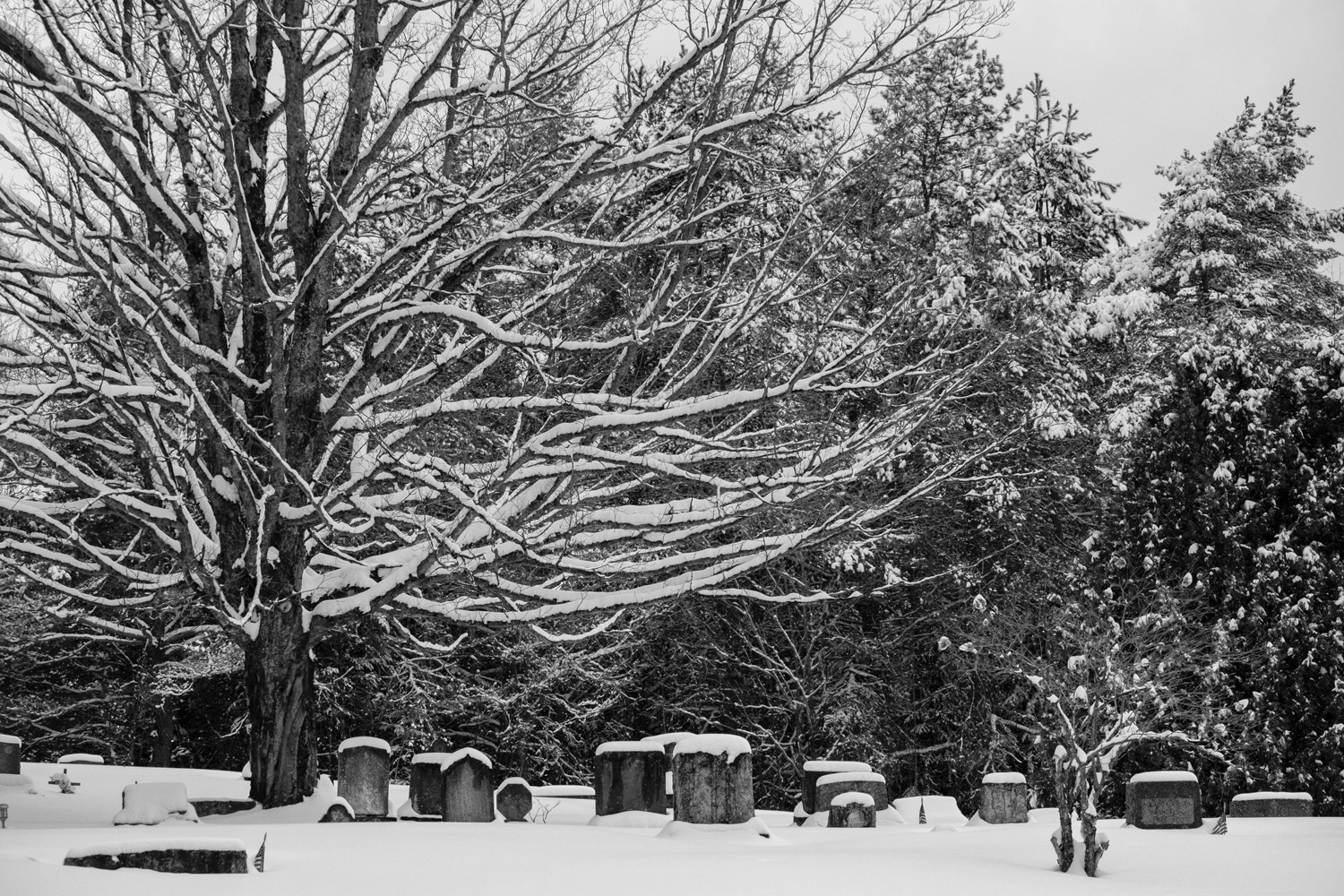
Ladd Cemetary (Fujifilm X Pro 2, XF 50-200mm OIS)
In my normal photography with the Fuji system, I tend to favor mild wide lenses like the 23 mm lens in my X100 series cameras, combined with a mild telephoto such as my XF 56mm f1.2. With the 50-200mm I tended to shoot from its short end, out to about 160 mm, because as it approaches 200 mm, sharpness is known to deteriorate slightly. It thus tends to be an outdoor lens, as it is not nearly fast enough, (nor razor sharp wide open like the Fuji primes ) for natural light indoor photography.
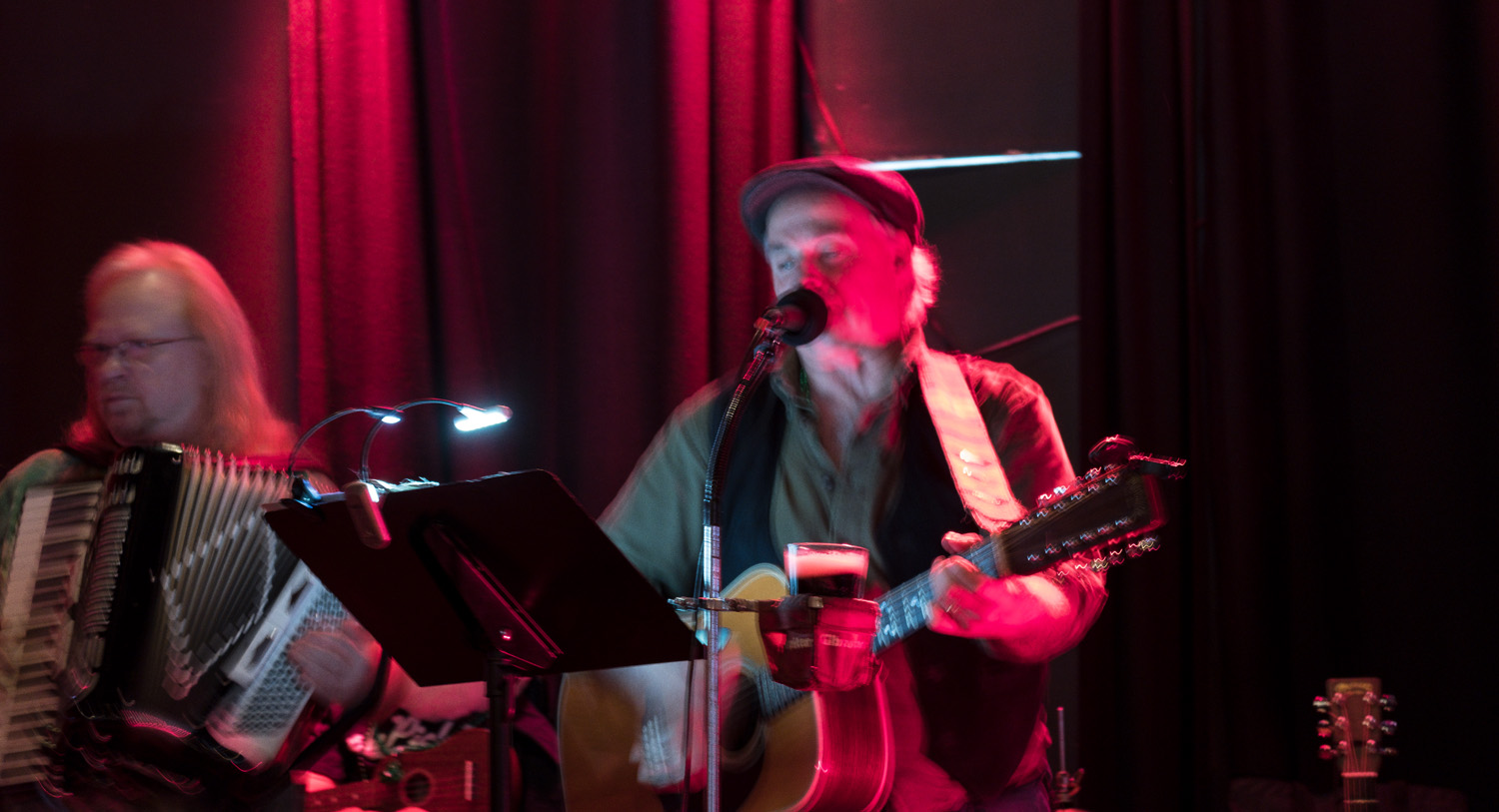
Don Chappell on St Patrick’s Day (Fujifilm X Pro 2, XF 50-200mm OIS)
Particularly on a “long” lens. the addition of optical image stabilization (OIS) is extremely convenient. It definitely increases your “keepers” if your subject is static.
Now I love being a prime lens snob. To be honest, though, the quality of both of the original “kit” lenses is somewhere between more than adequate to awesome, Used within their limitations (good light, slowly moving subjects) they are no impediment to producing quality prints of landscape subjects. This suits me fine. If I want to go back to shooting sports and fast-moving wildlife, I would probably invest in a use or refurbished Nikon D7XXX body to use with the 70-200 f2.8 VR Nikkor that still lurks in my studio. For what I do, this Fuji telephoto zoom works just fine.

Winter is Long (Fujifilm X Pro 2, XF 50-200mm OIS)
Fujifilm makes several other long zooms including a robust 50–140 millimeter f2.8 which would also suit my focal length needs, and allow more light for fast action and dusk/dawn shooting. It is $1500 new and weighs more than twice as much as the 55-200, attributes that are not particularly interesting to me. Like my Nikkor 70-200mm, it has sufficient size/weight to require a tripod mount. Thus, for me, it would be likely relegated to shooting from the car. That kind of shooting I tend to do with my heavier Nikon gear.
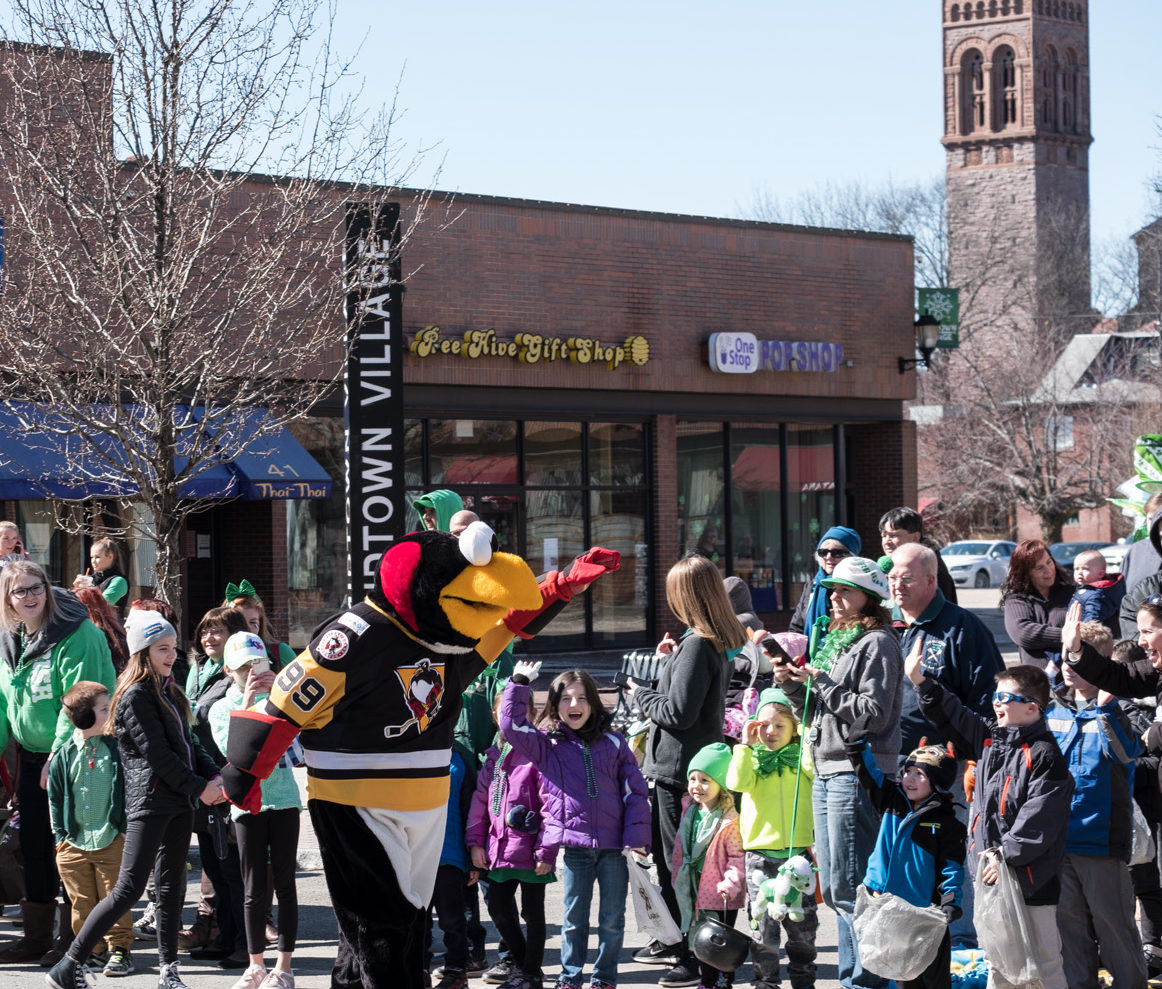
“Tux” on Parade (Fujifilm X Pro 2, XF 50-200mm OIS)
I still prefer prime lenses, both for their inherent quality and for the discipline they instill in my shooting. But I can see maintaining a camera bag, with the 2 zoom lenses, and a more SLR-like camera such as an X-T10/20 body. This would be fairly light, and a very easy “grab” when headed out into the outdoors for some impromptu exercise.
Given the quality of images I have seen these two lenses, such a gear bag would likely spend a lot of time by my side.

